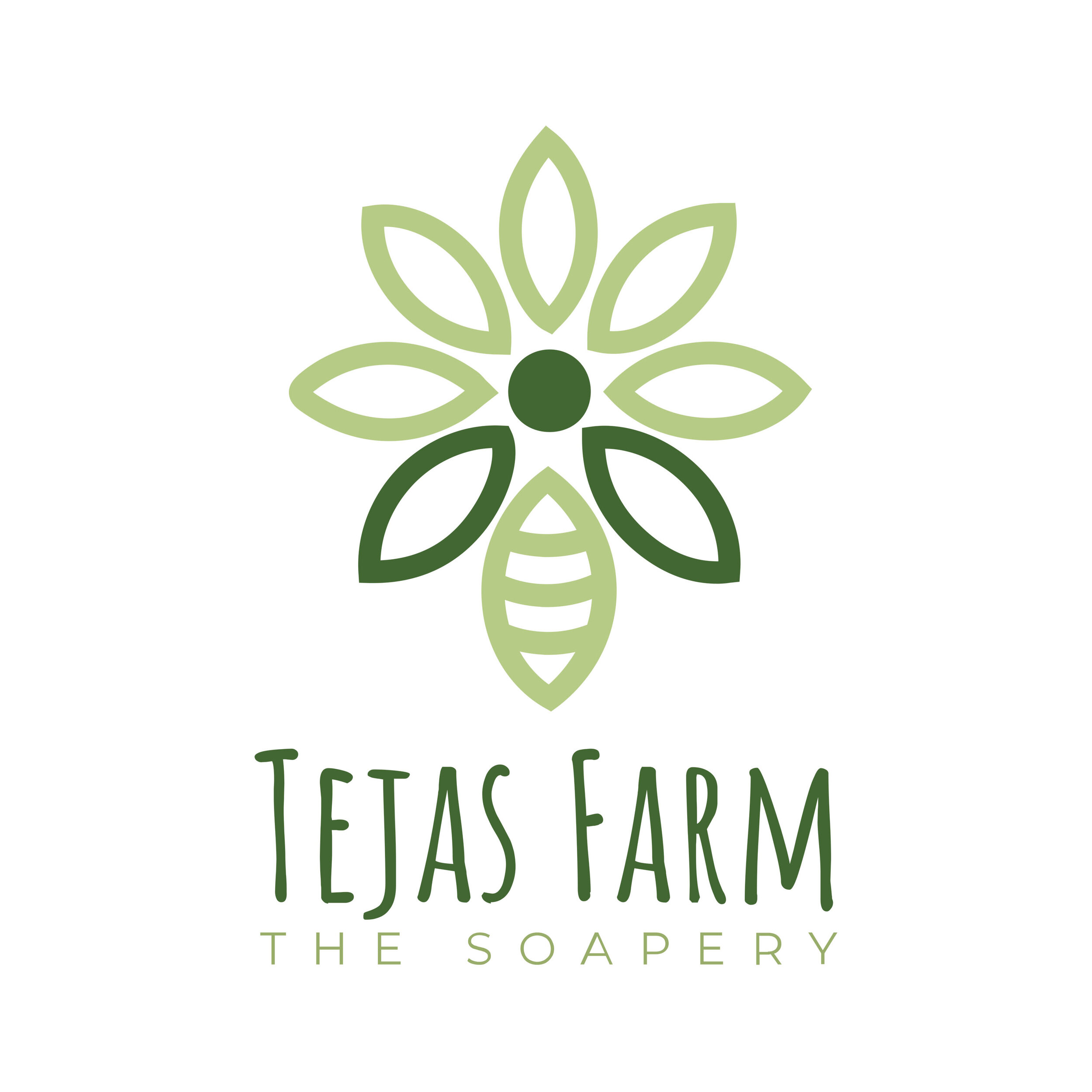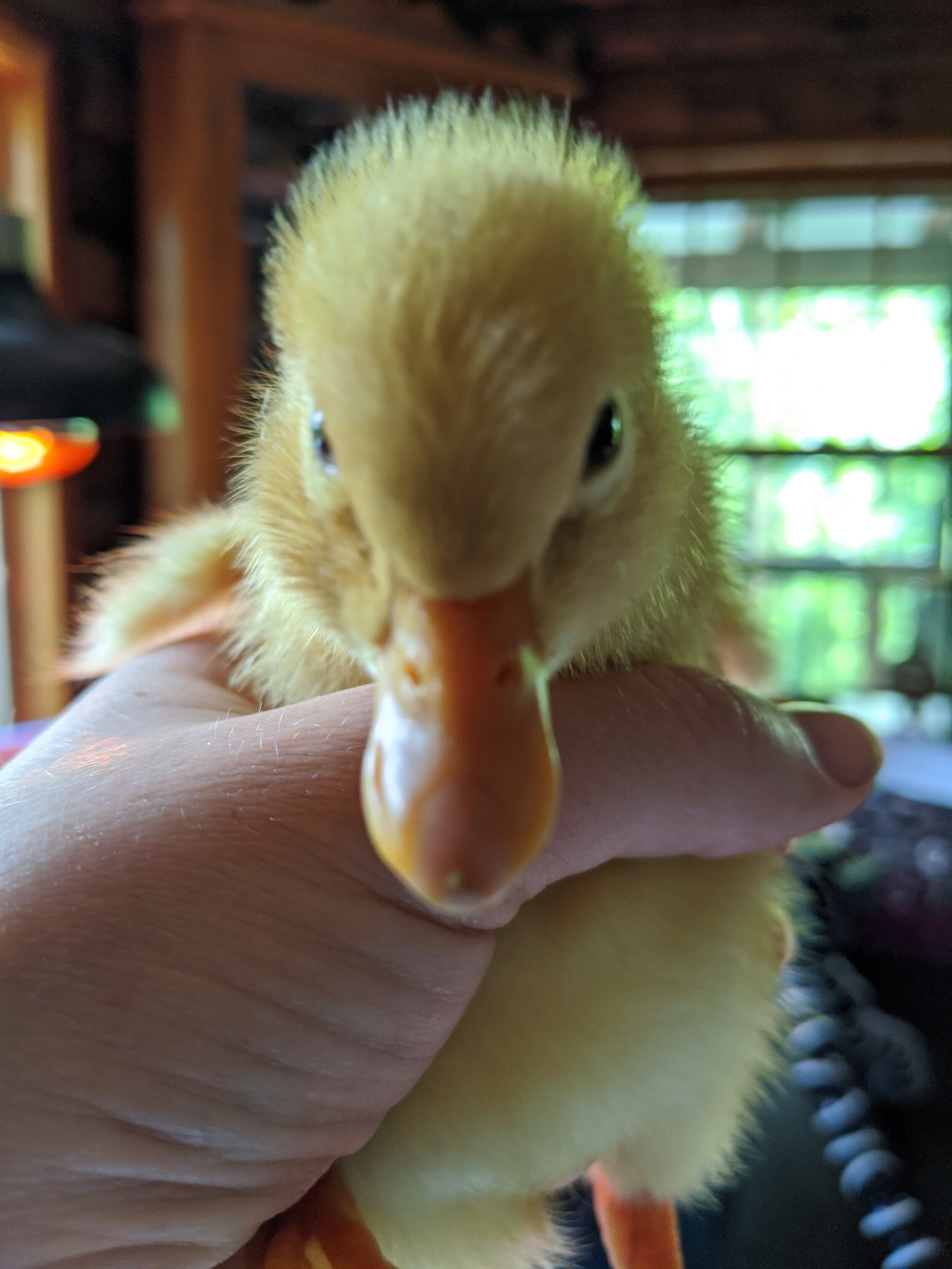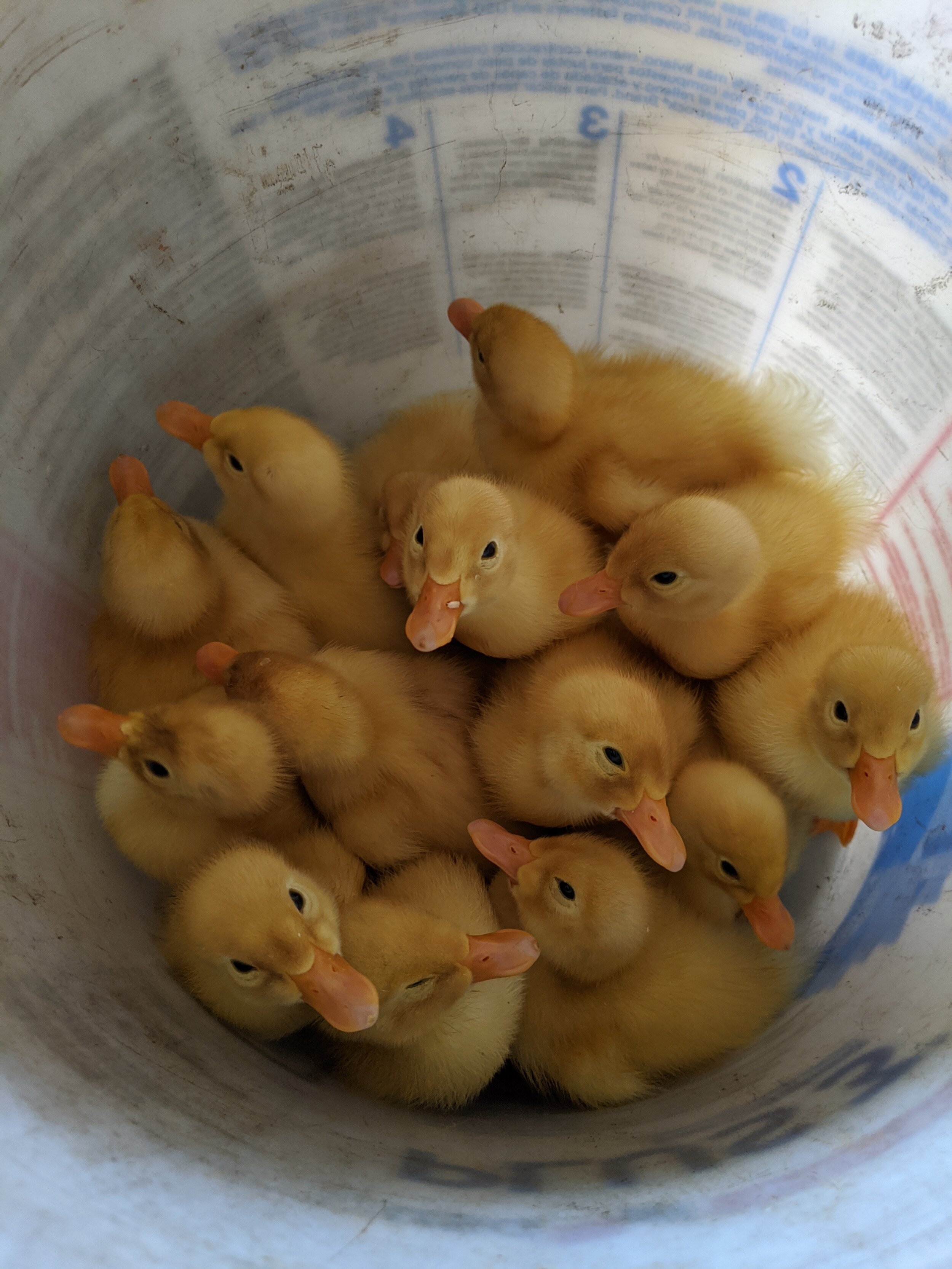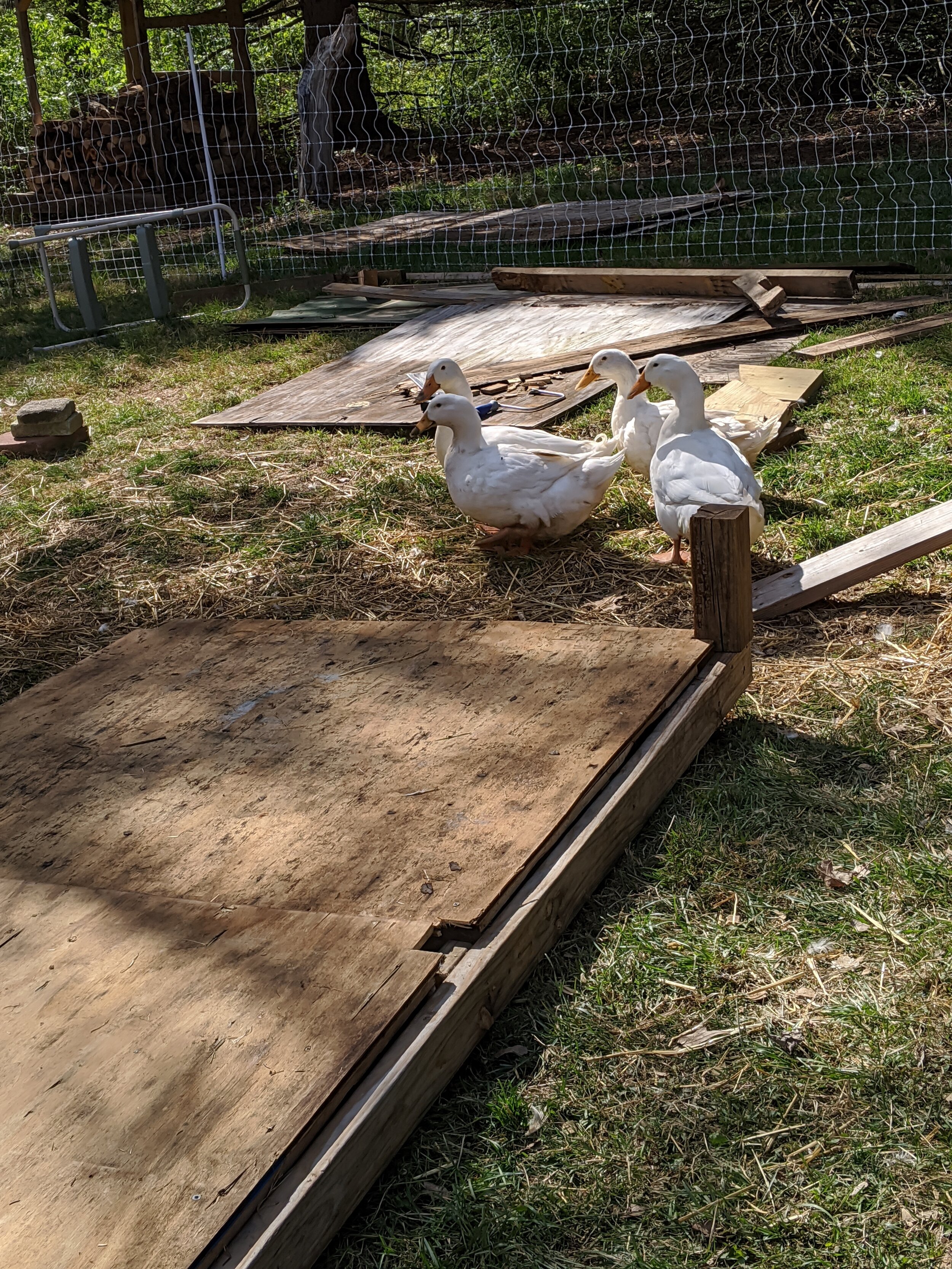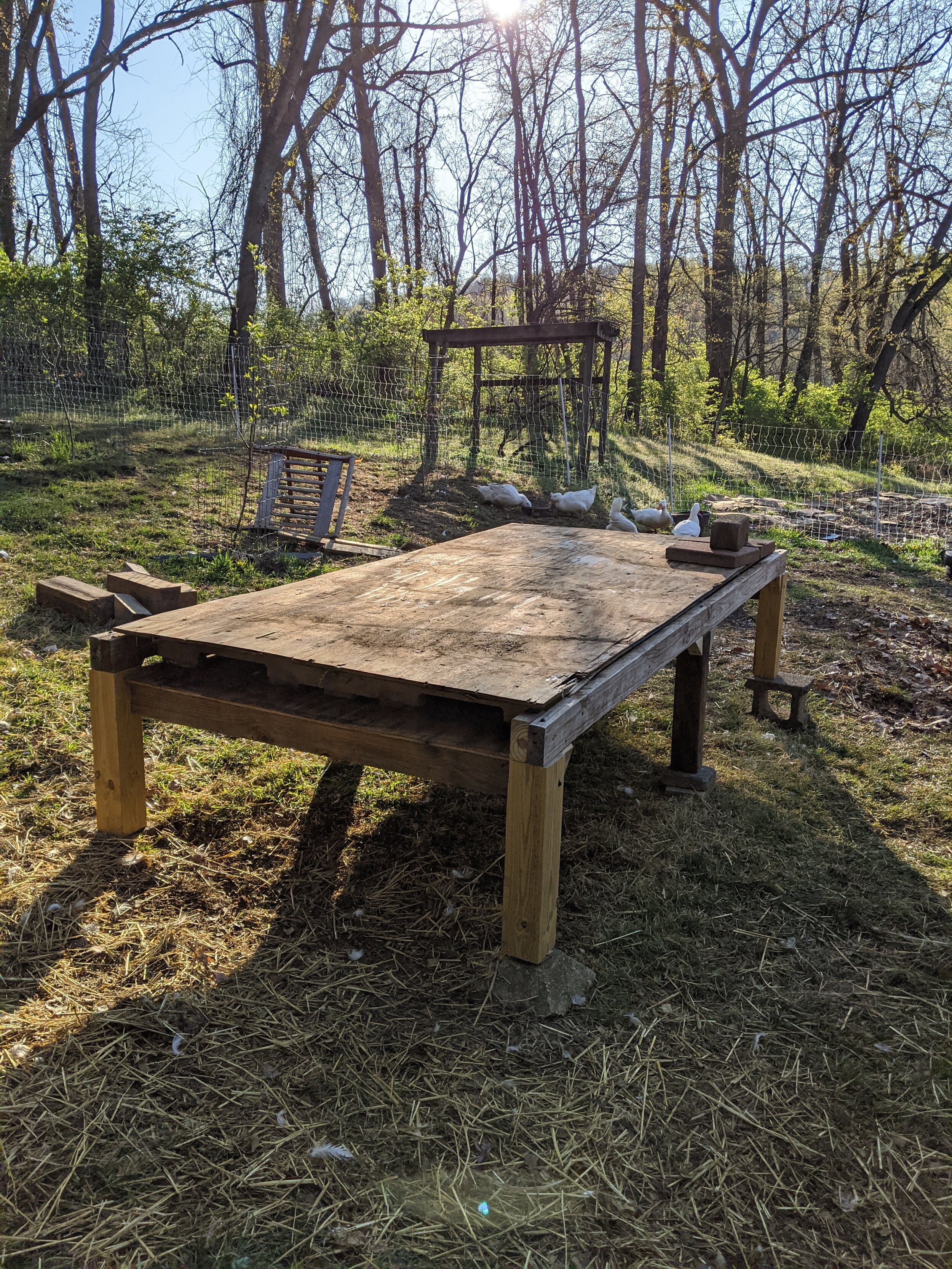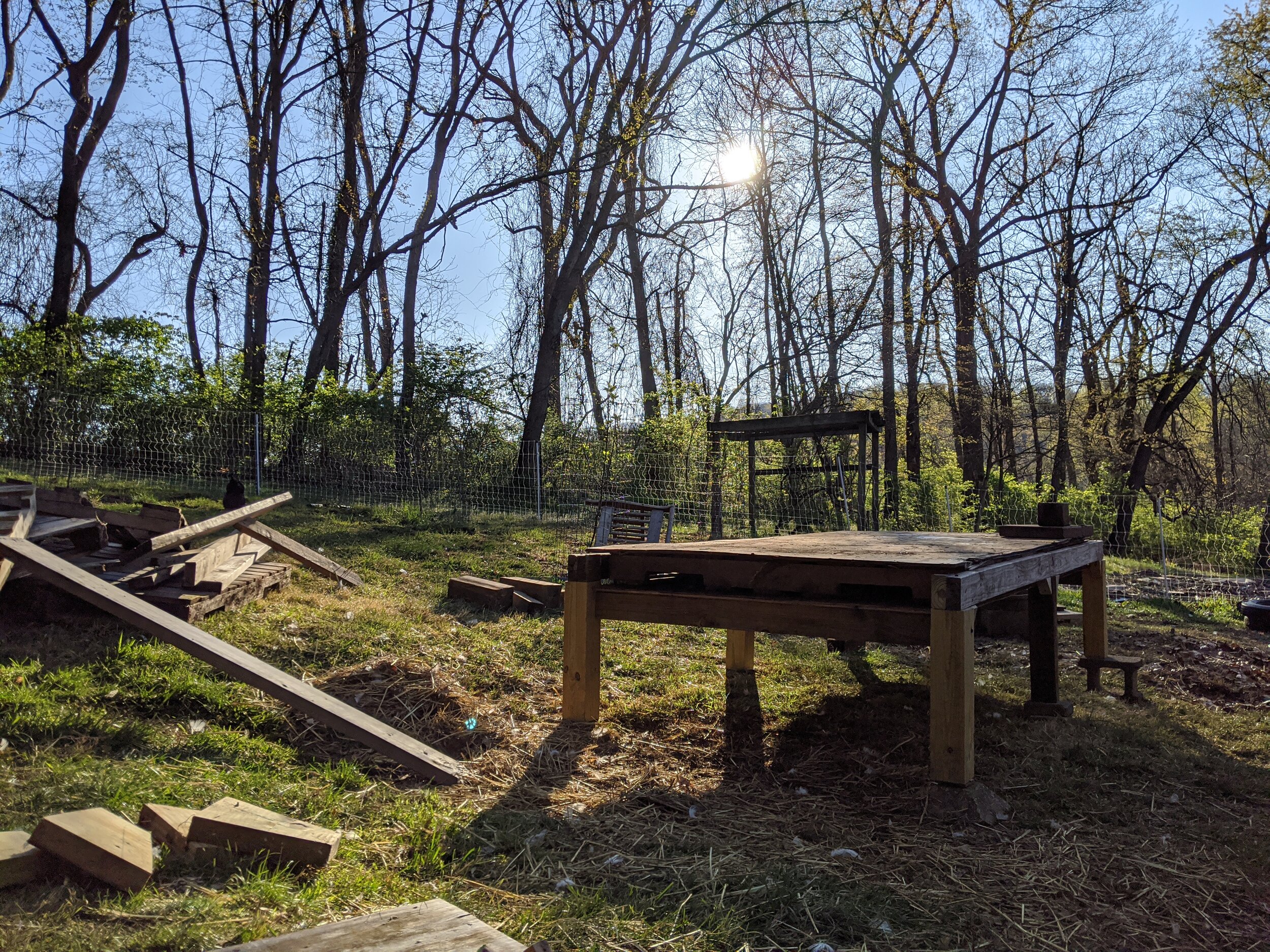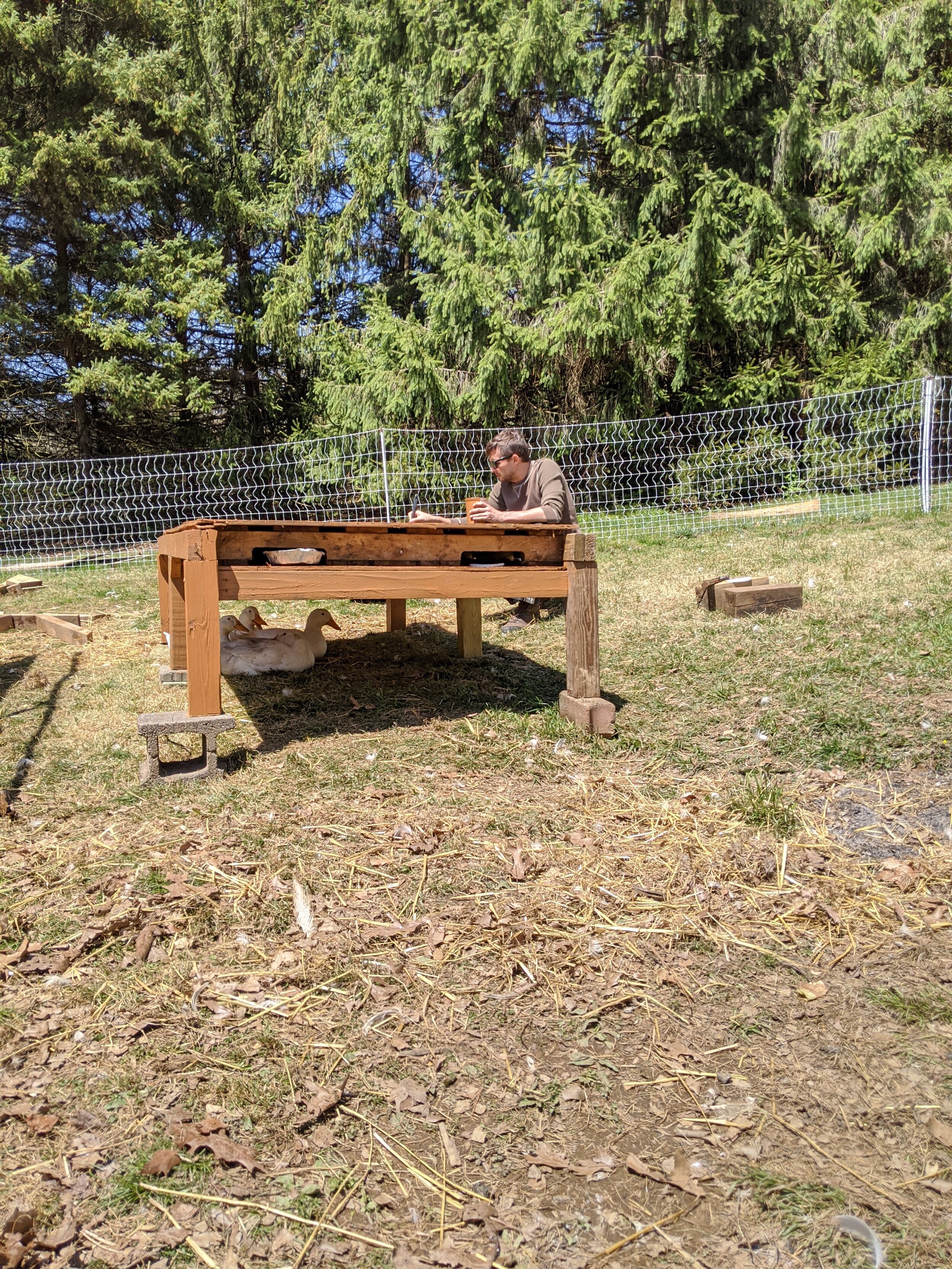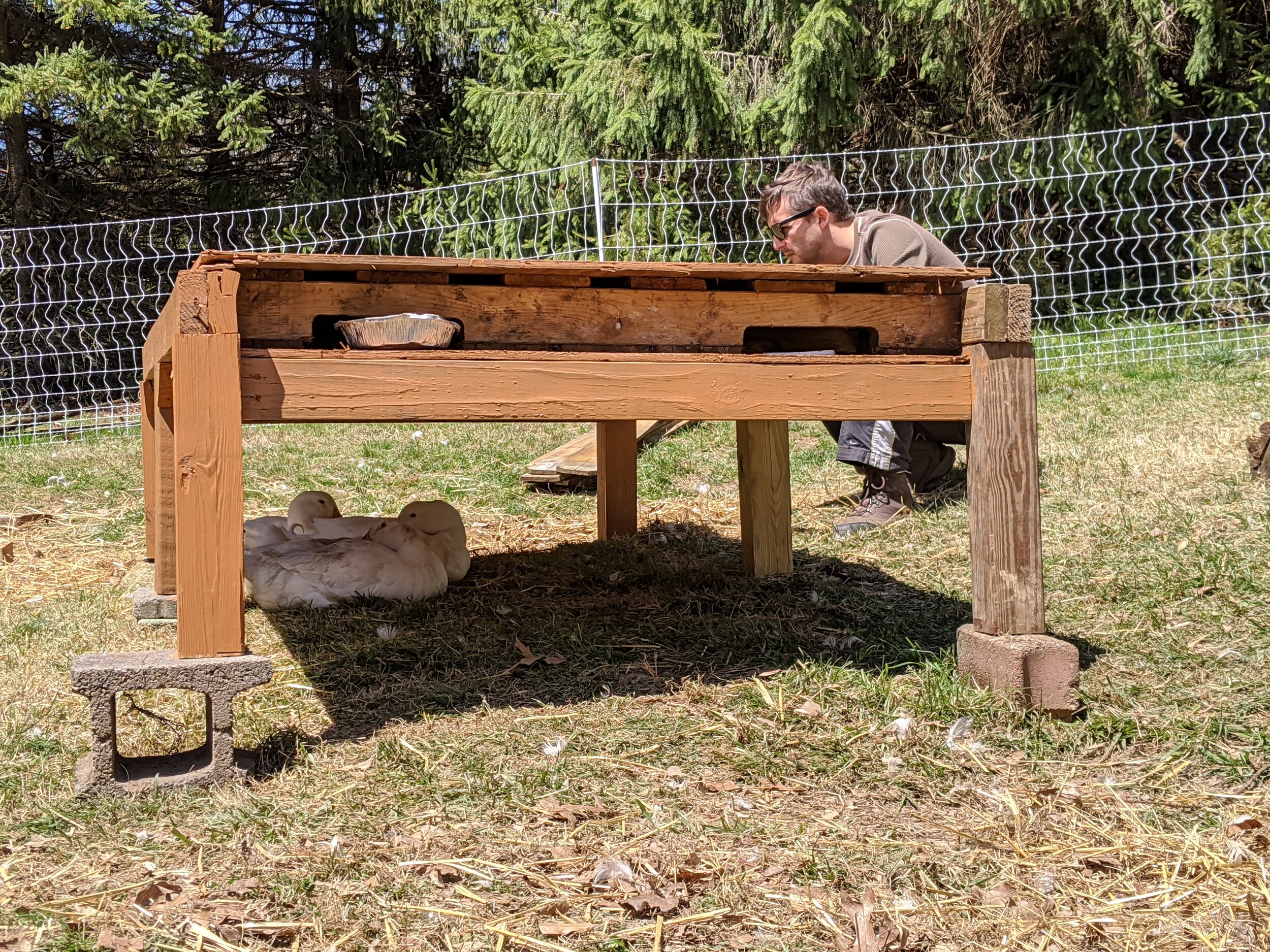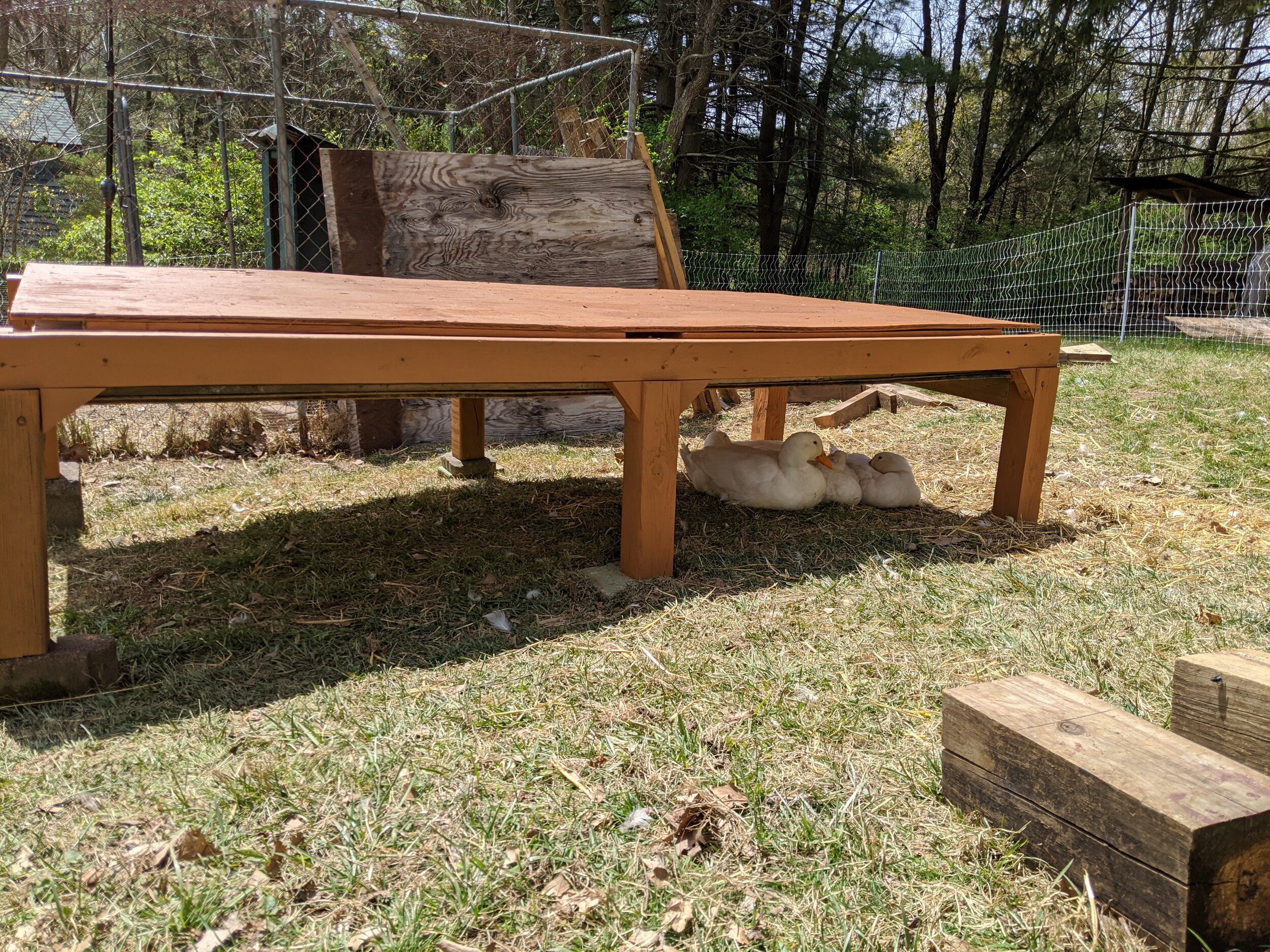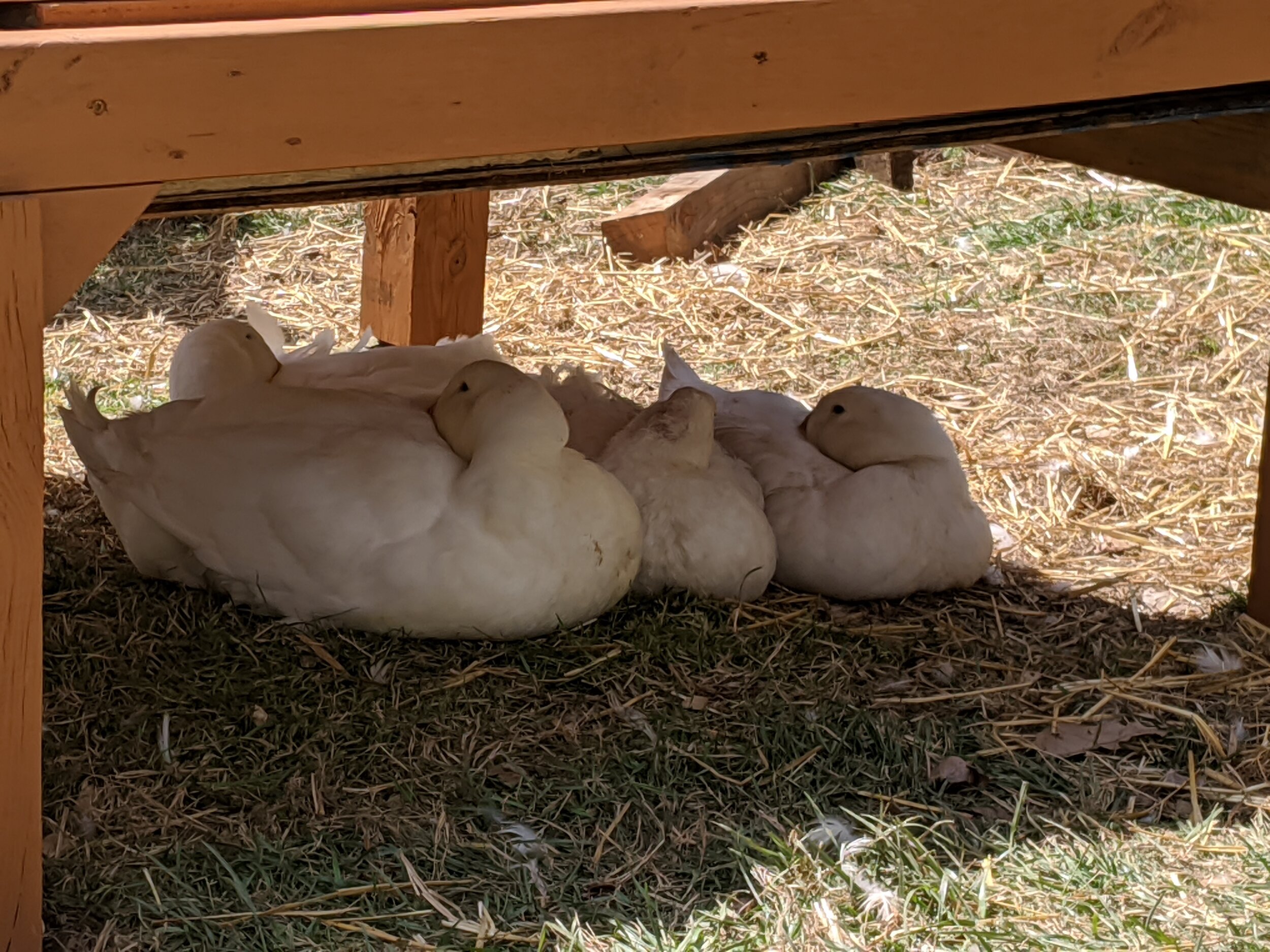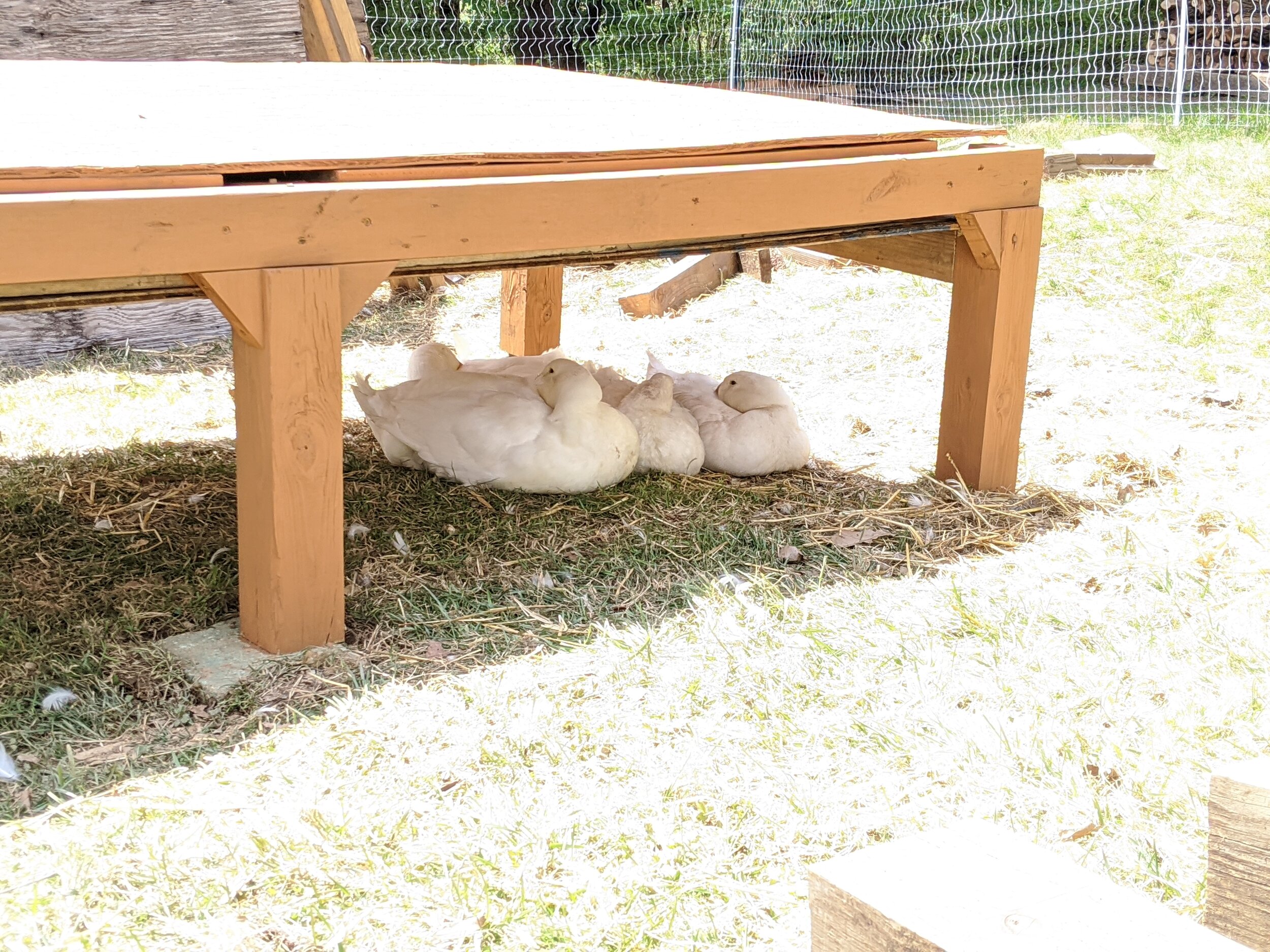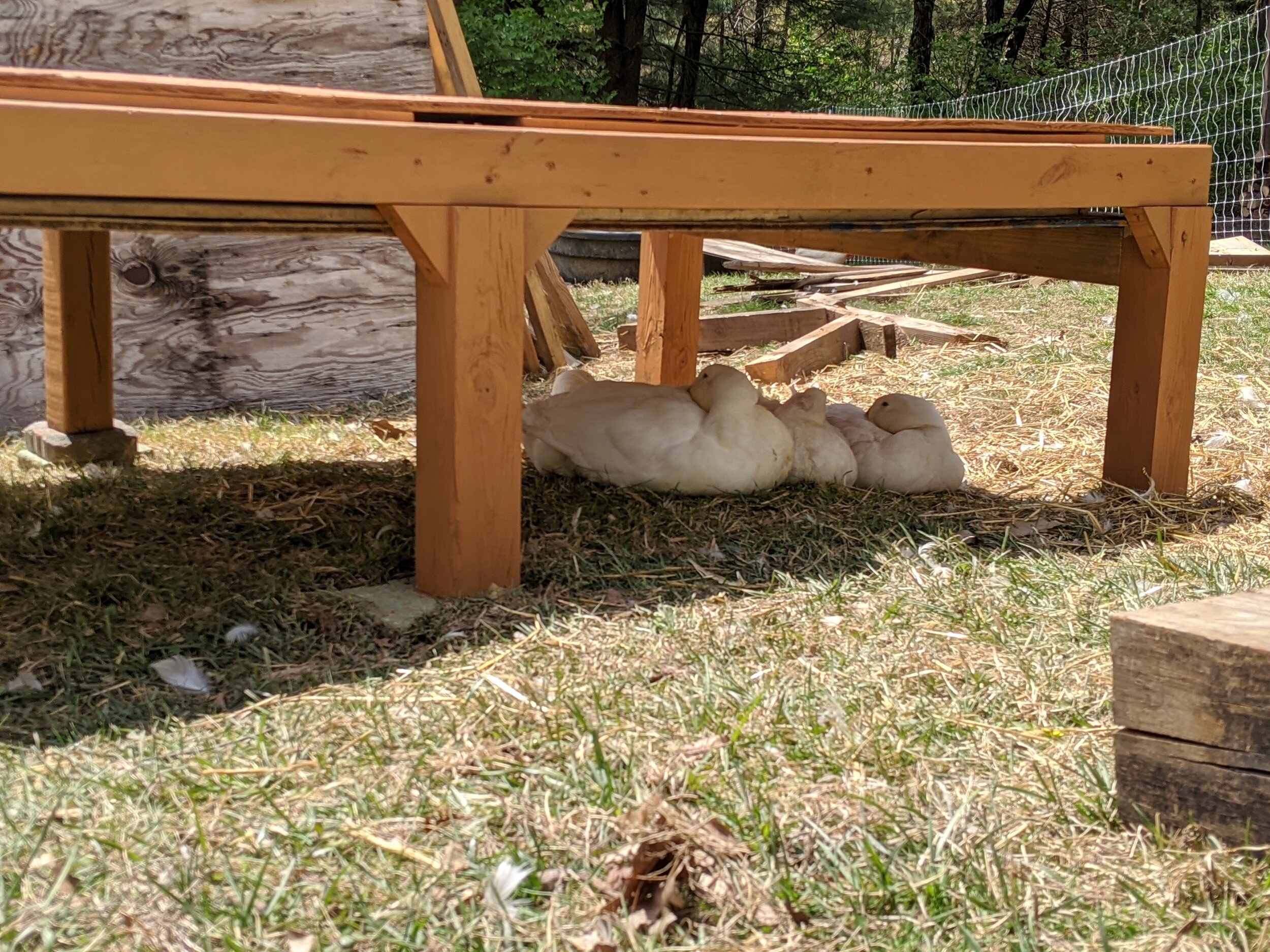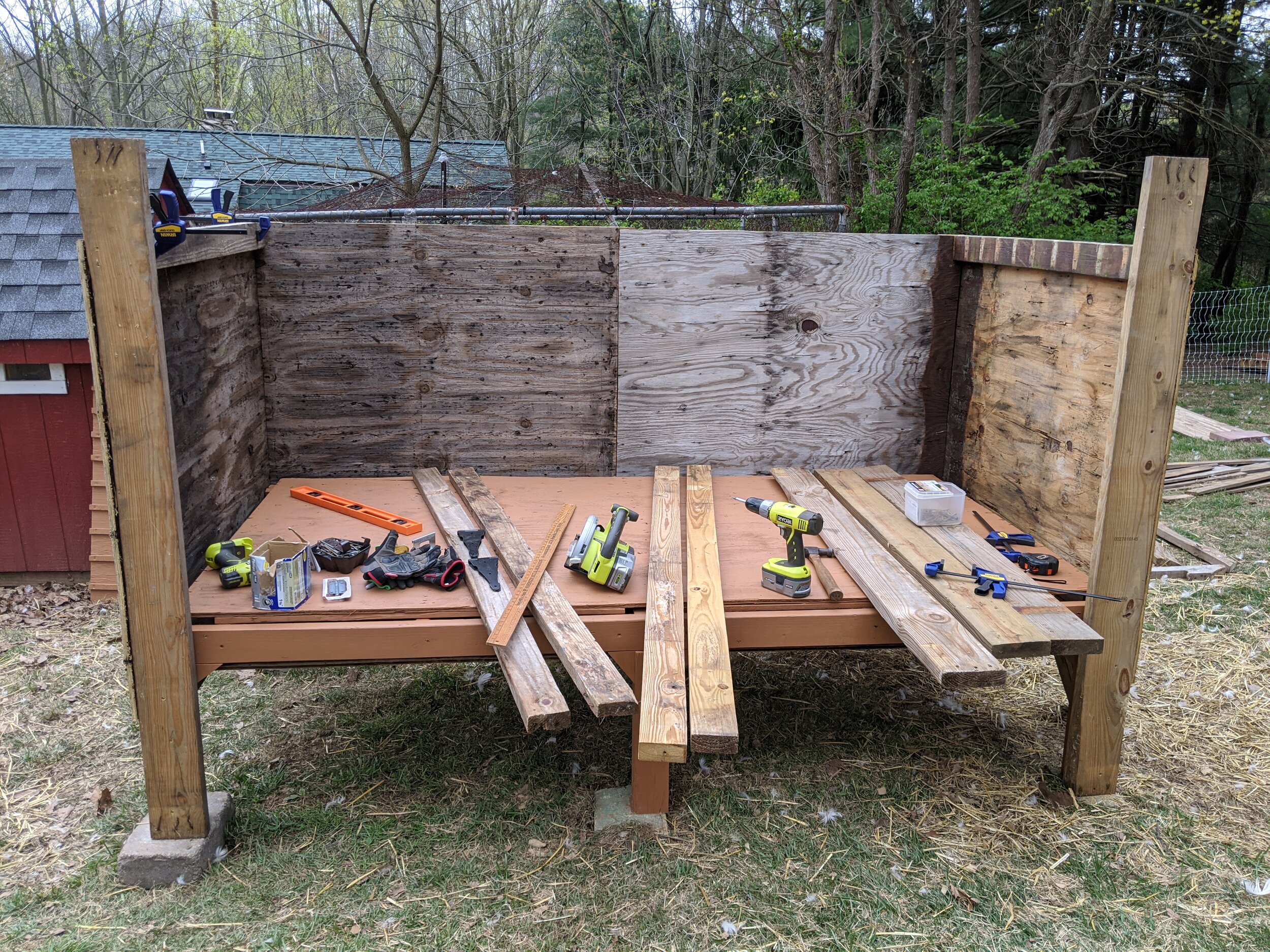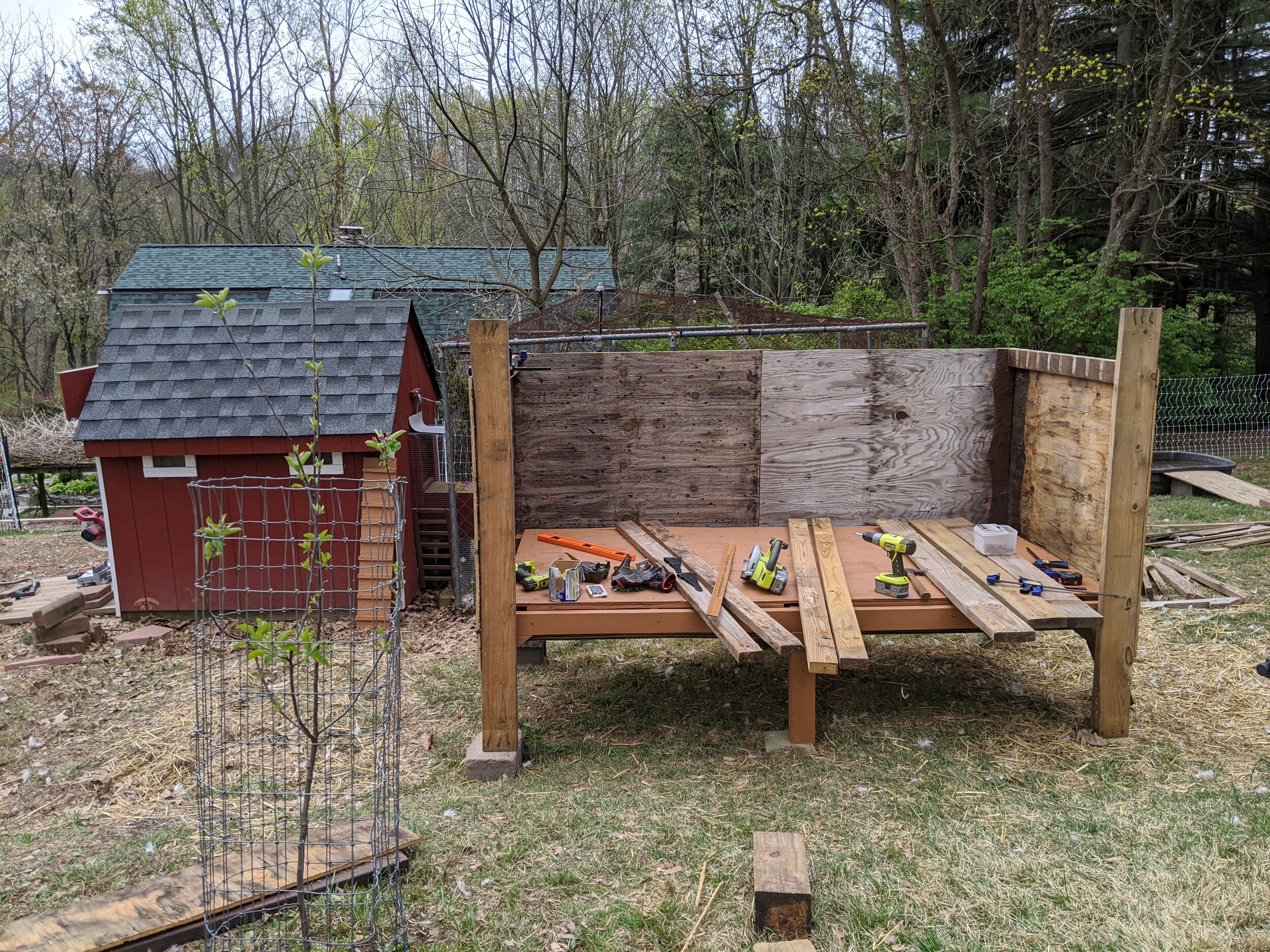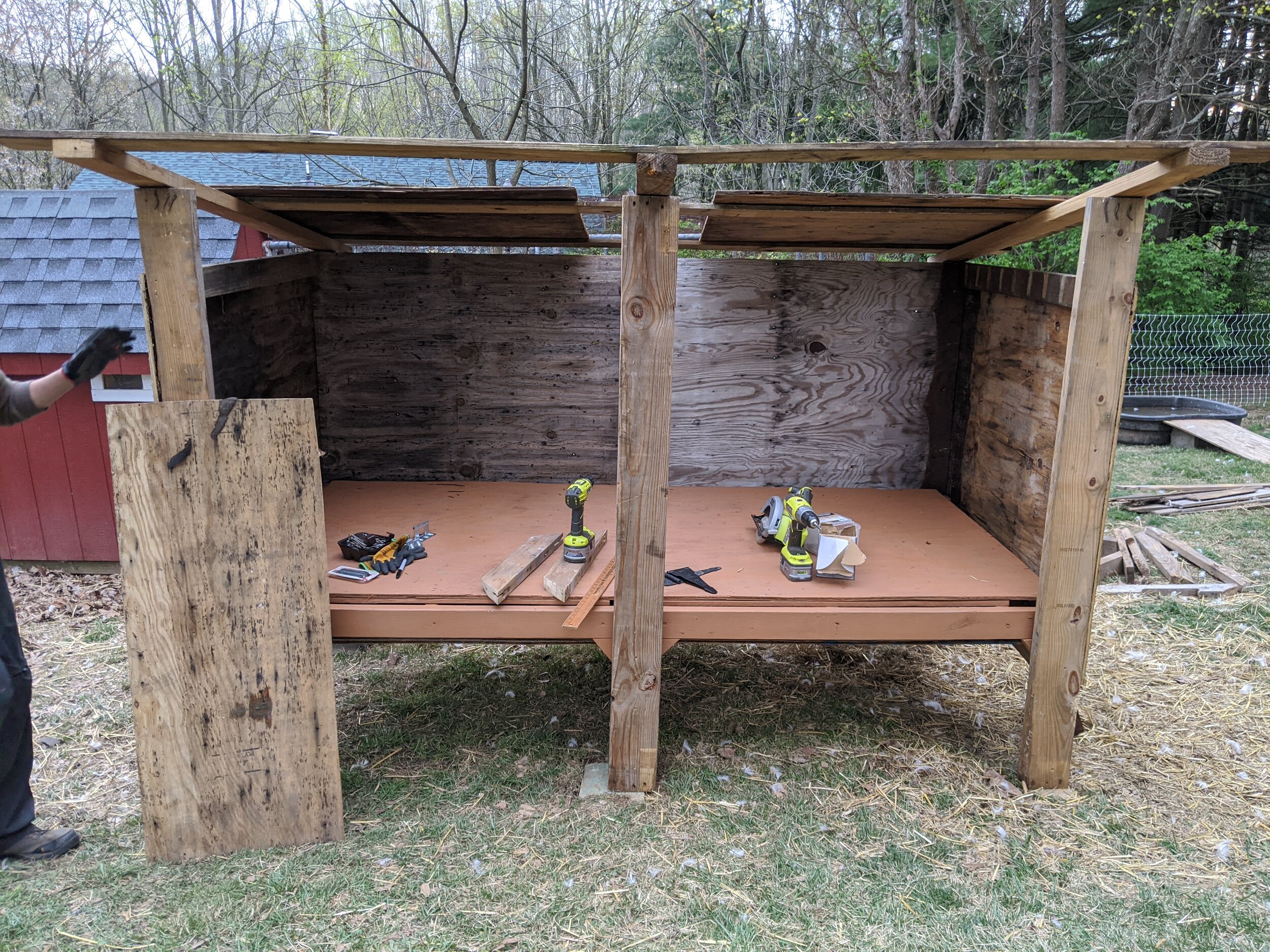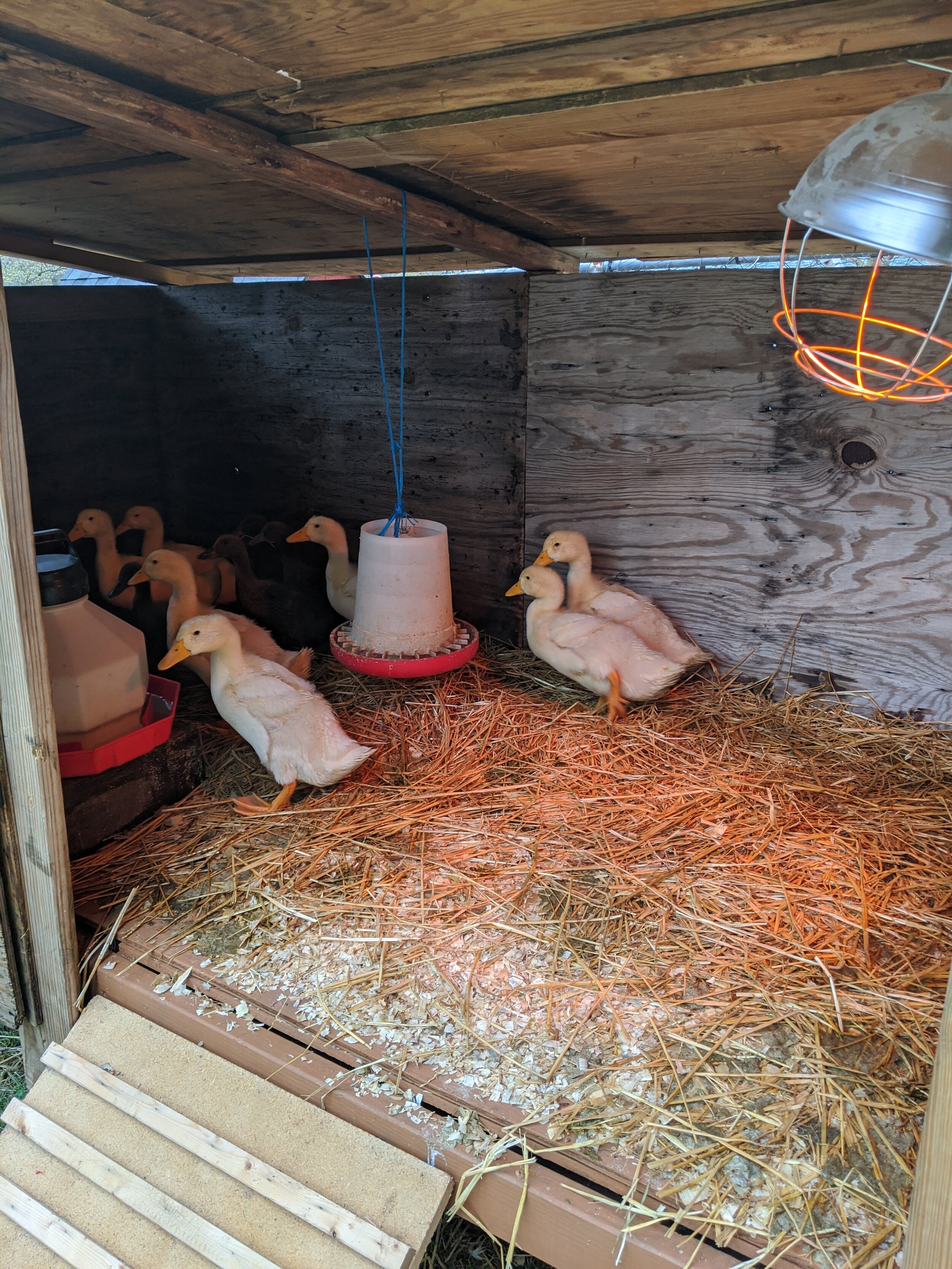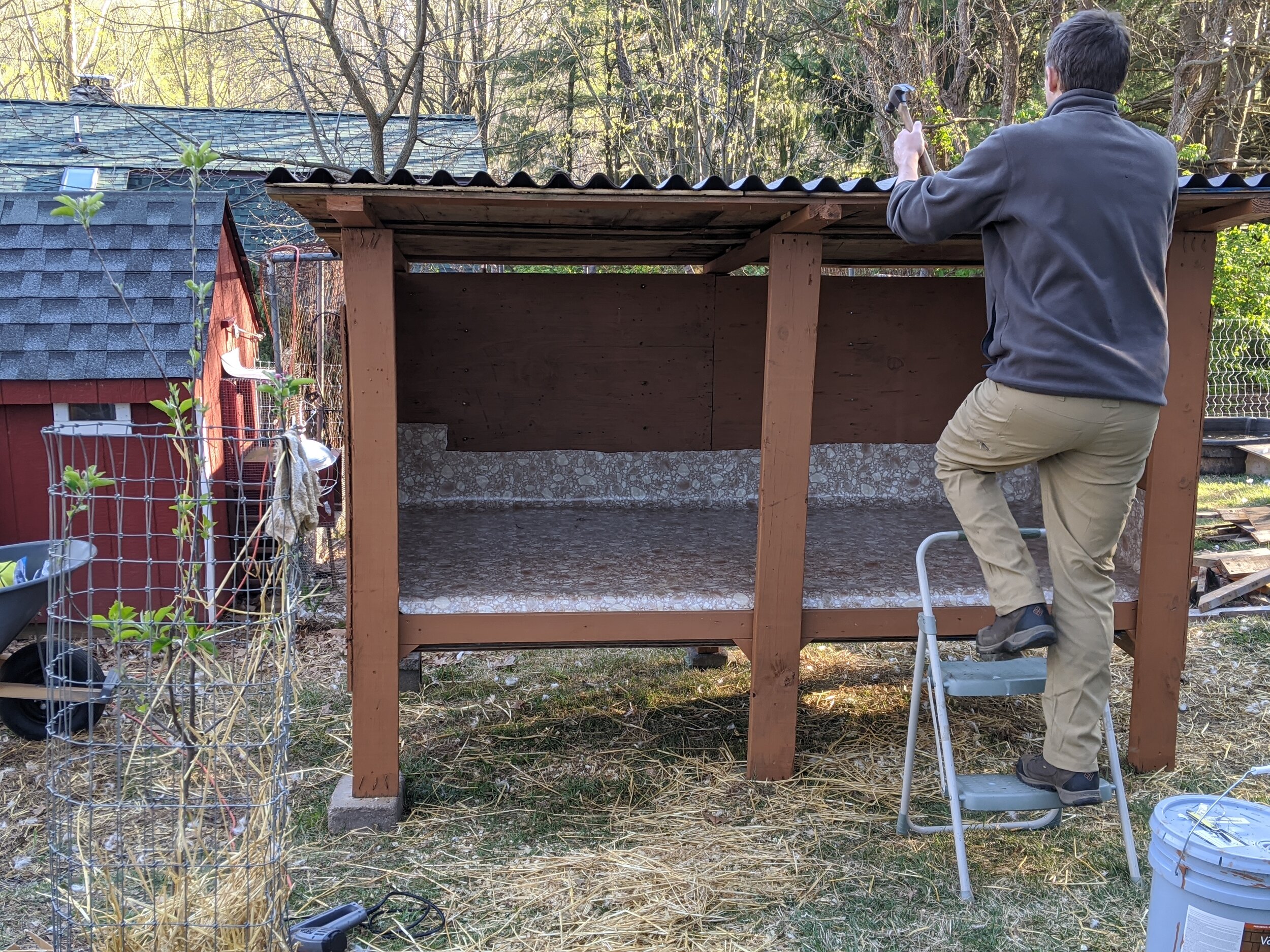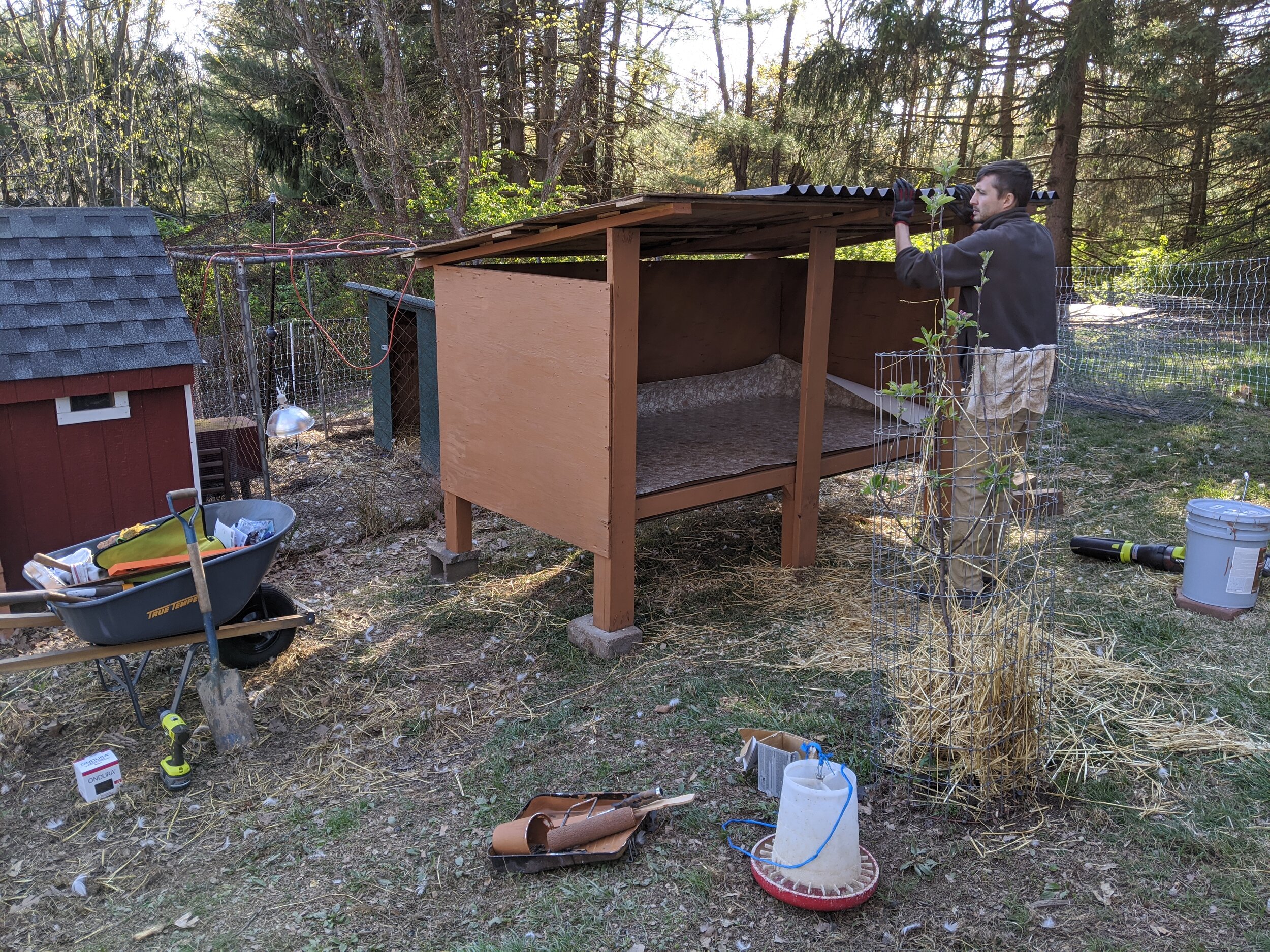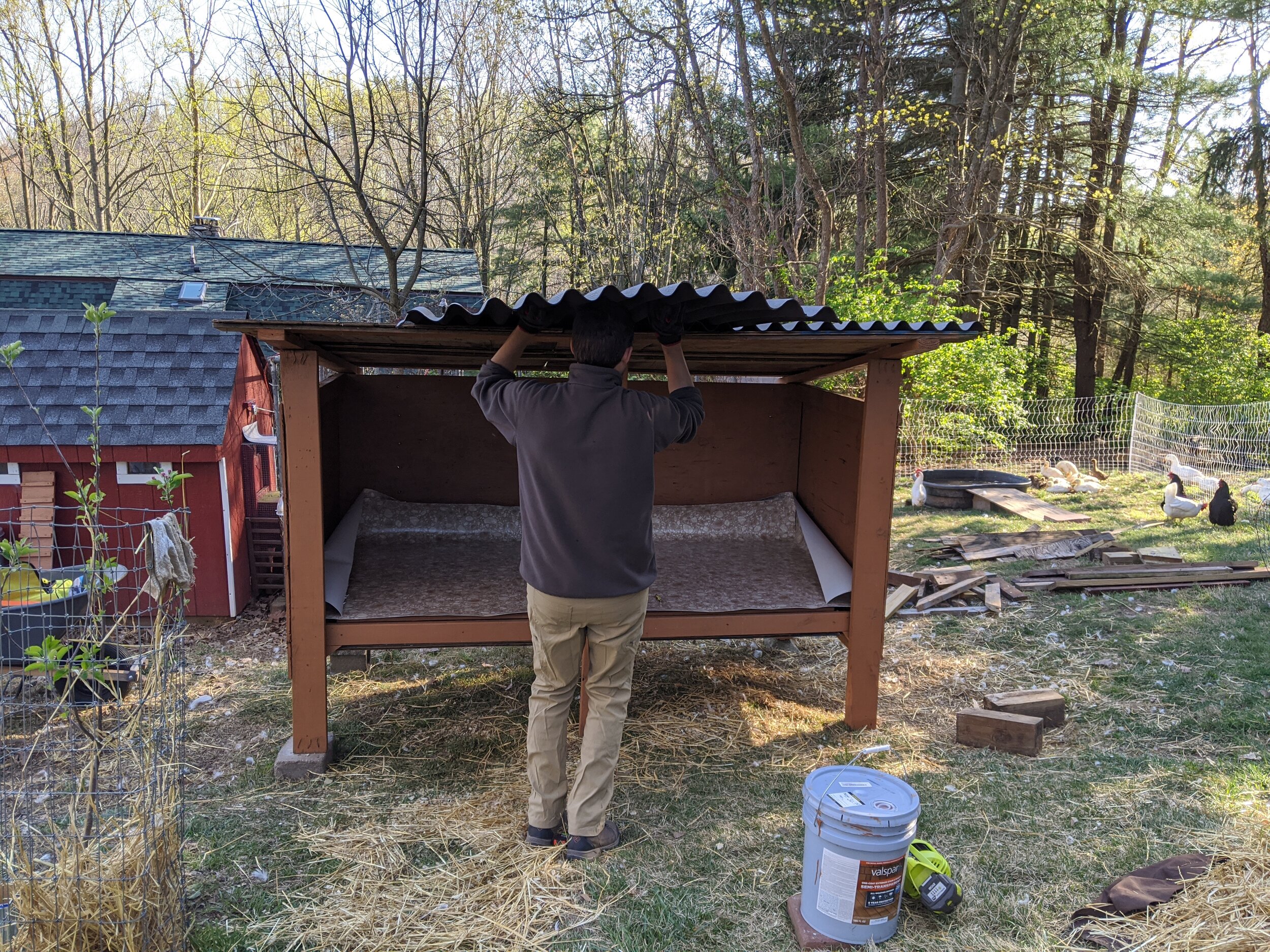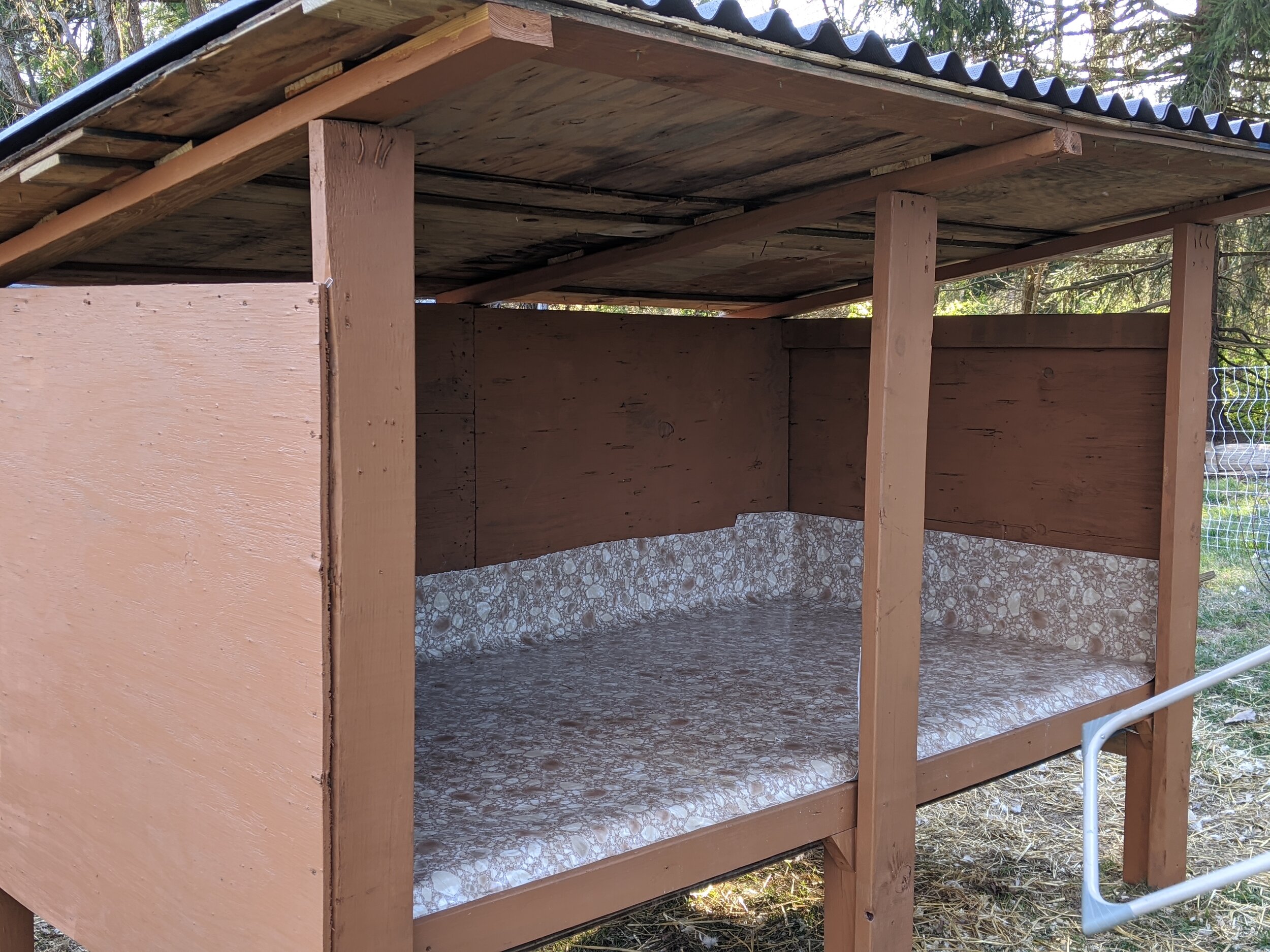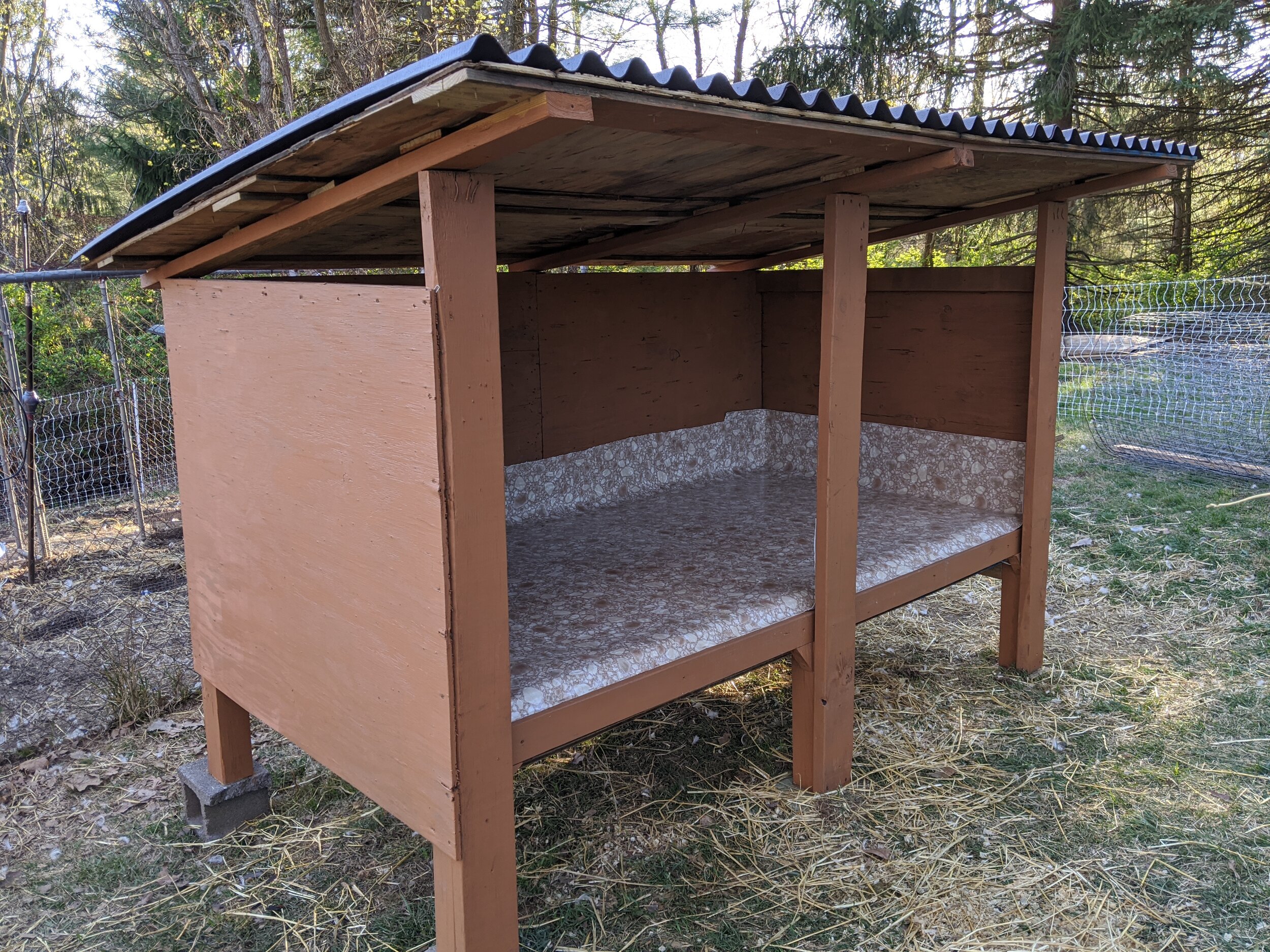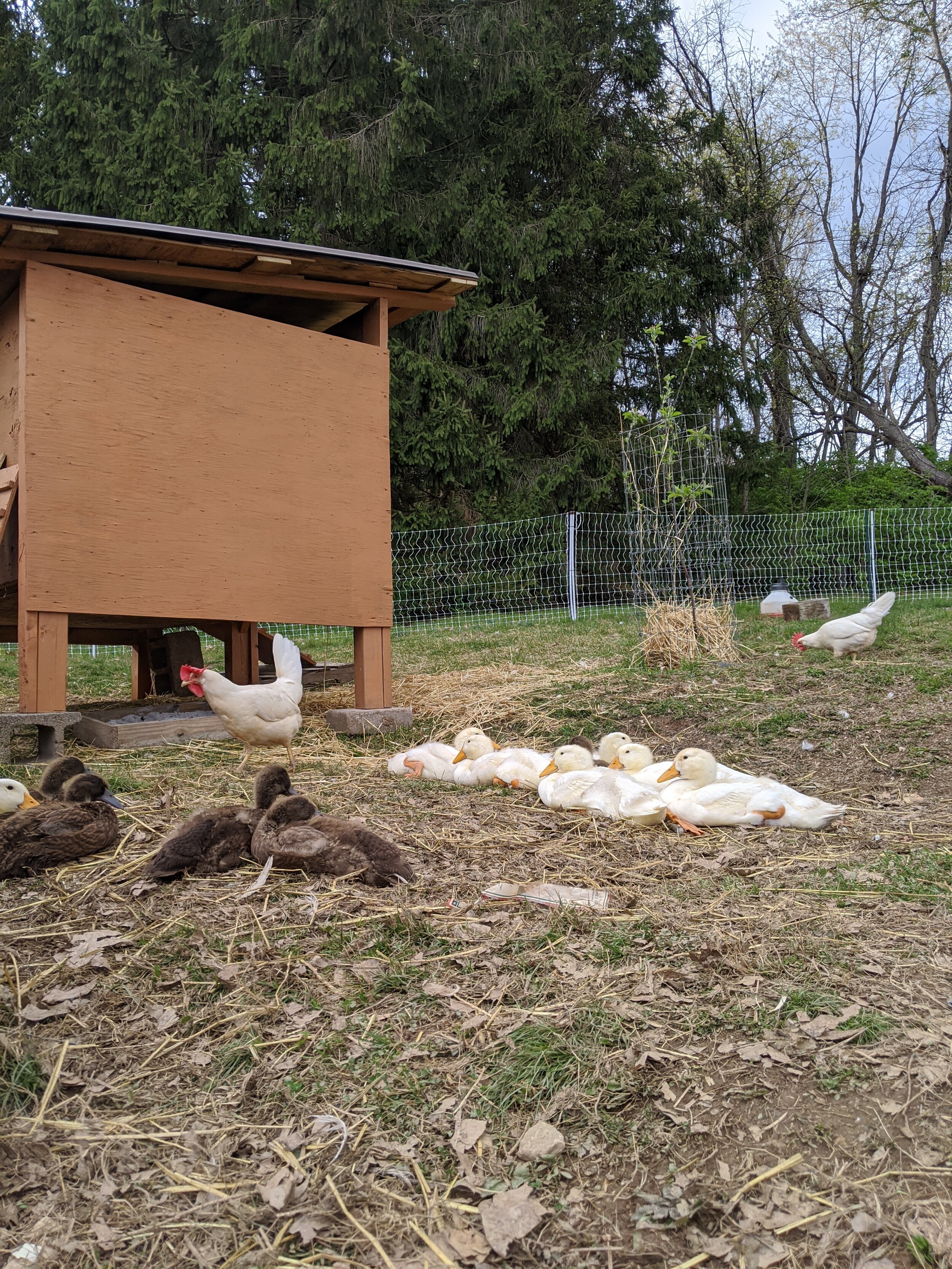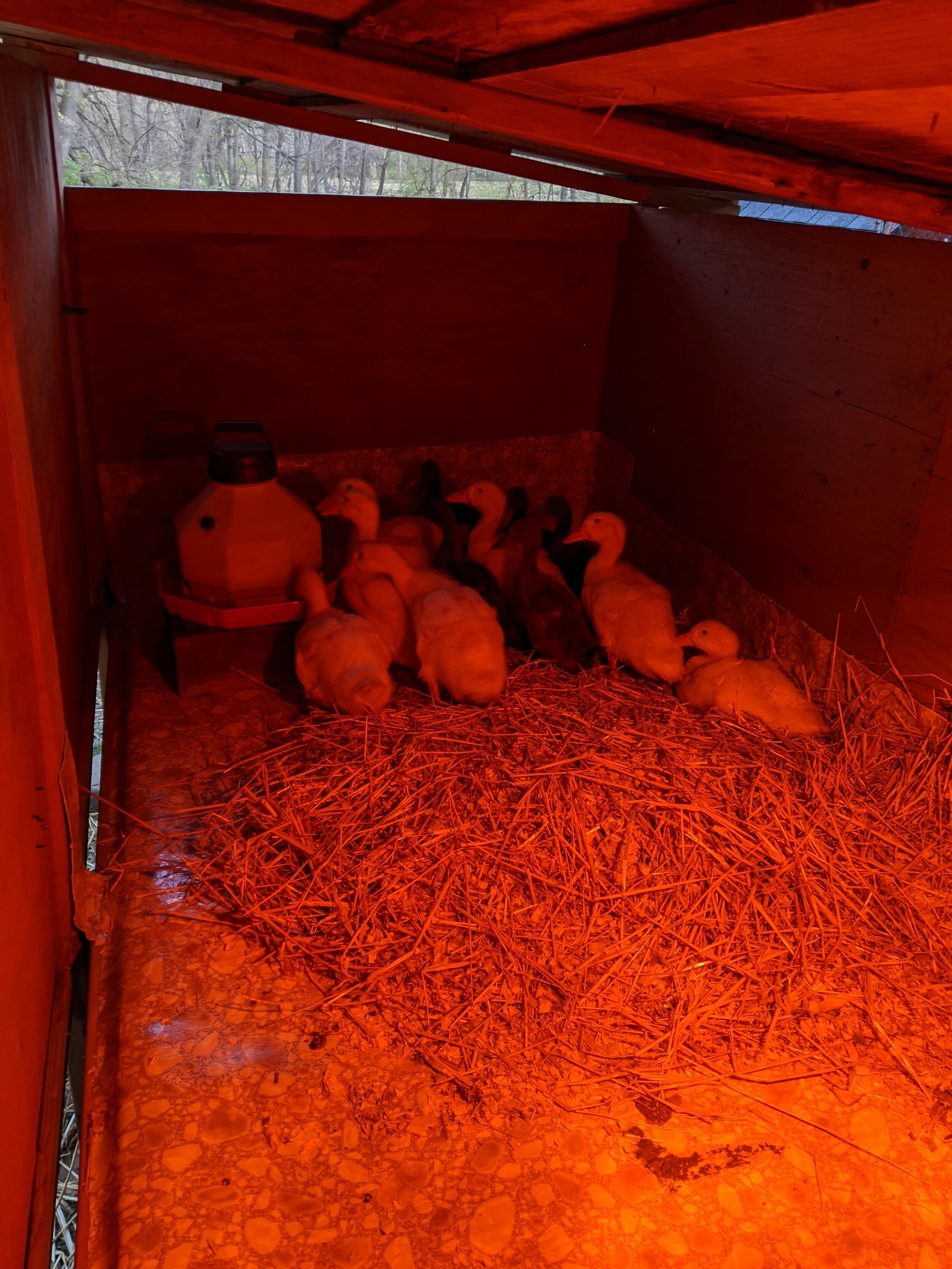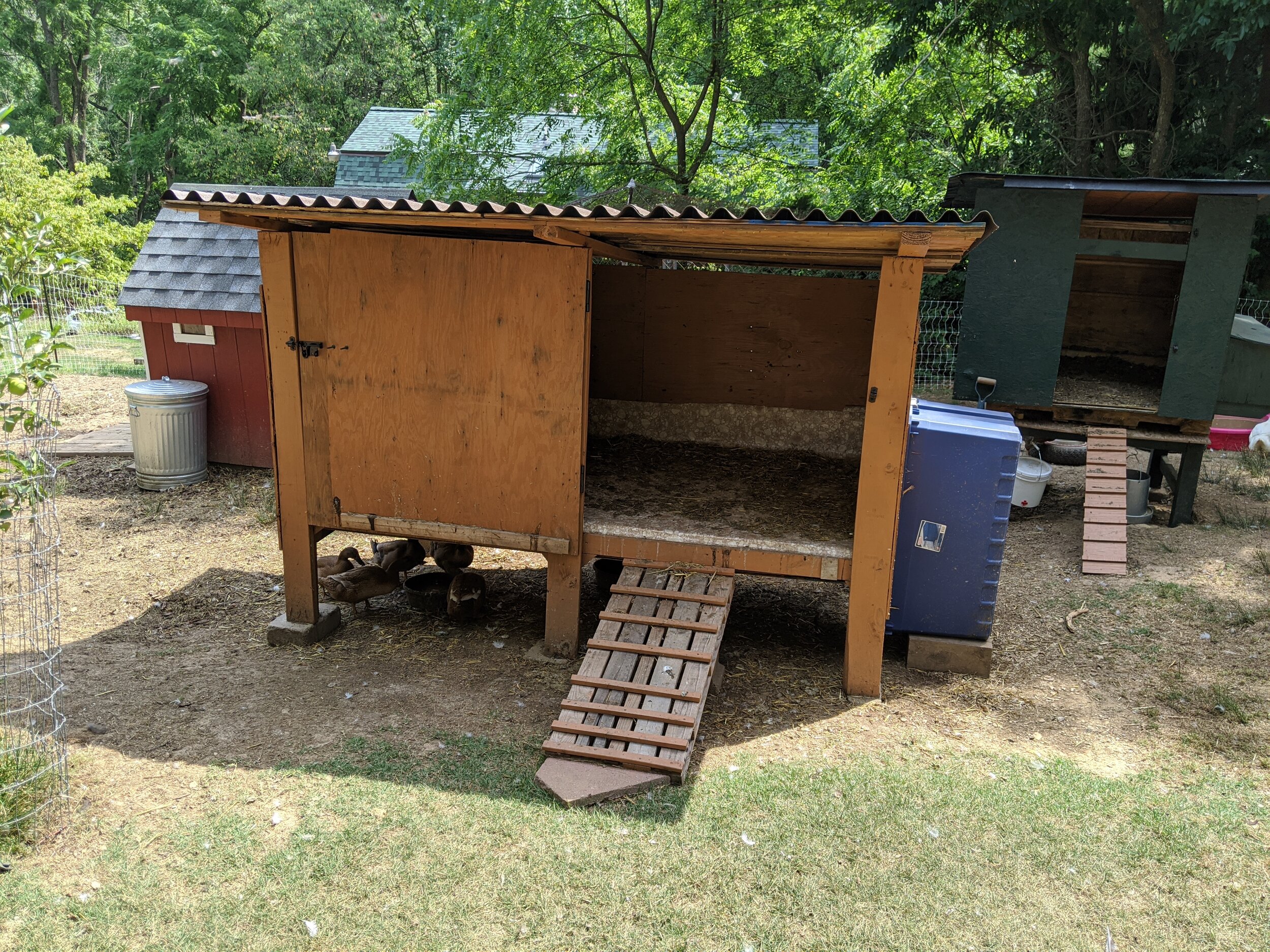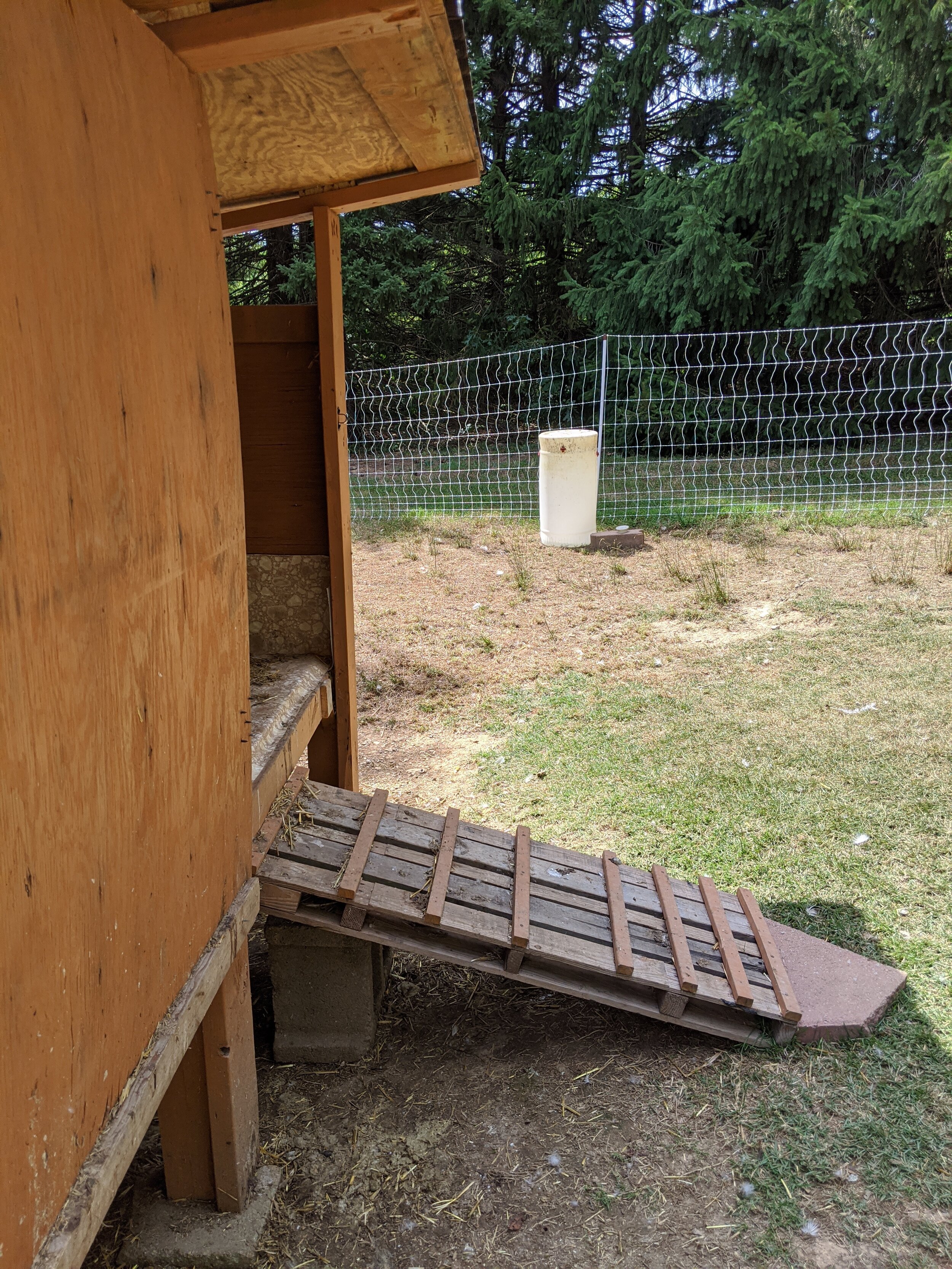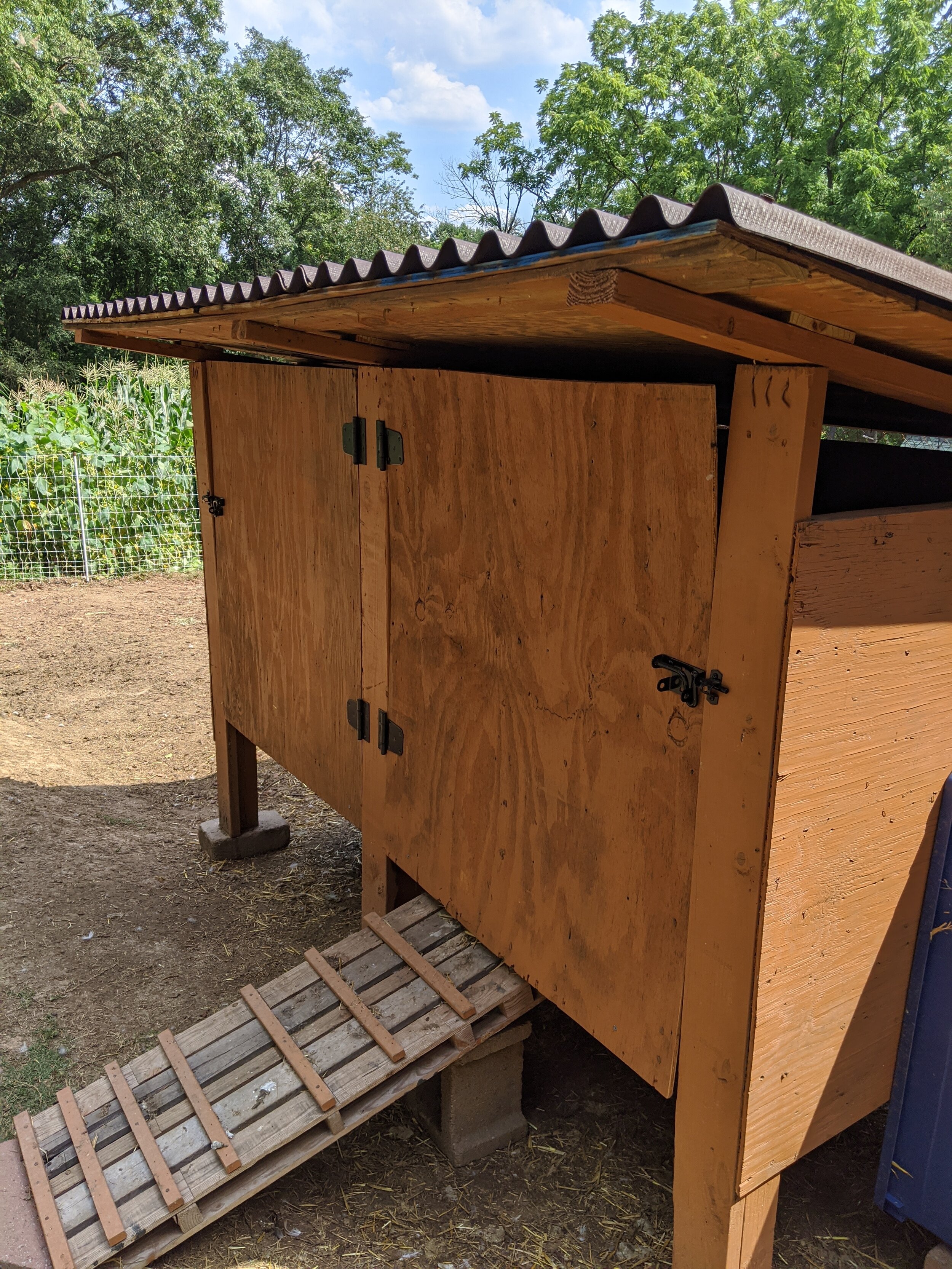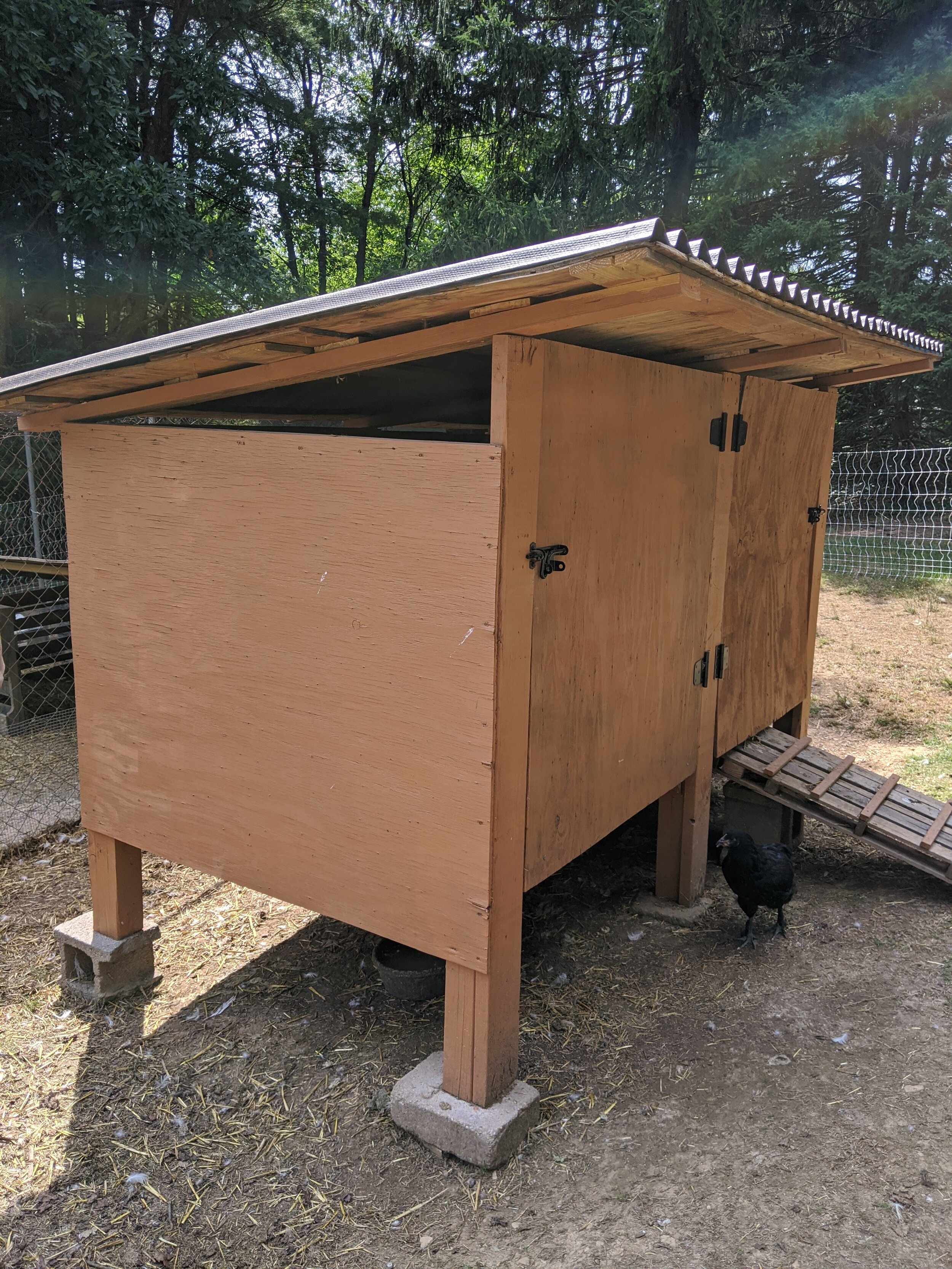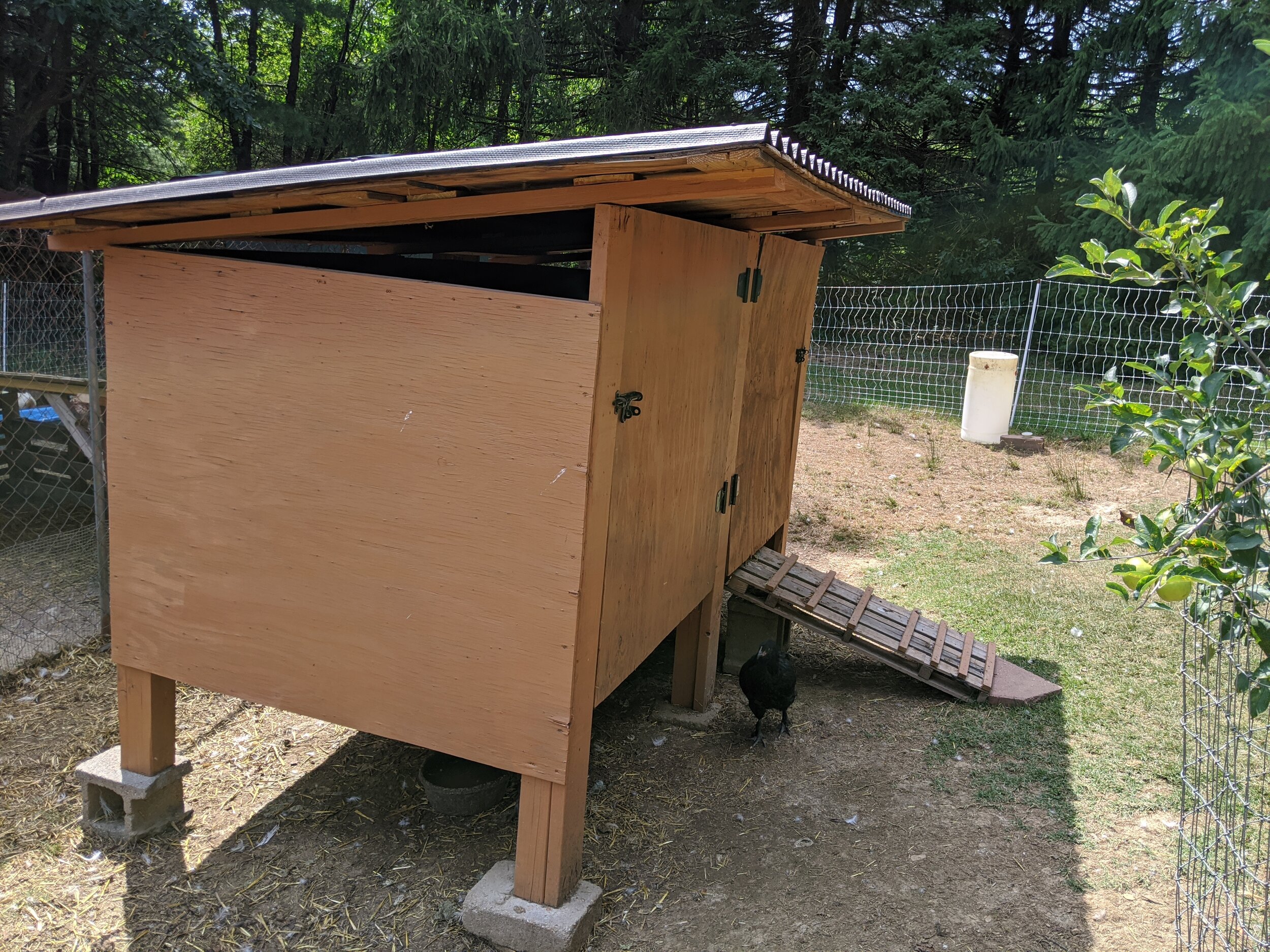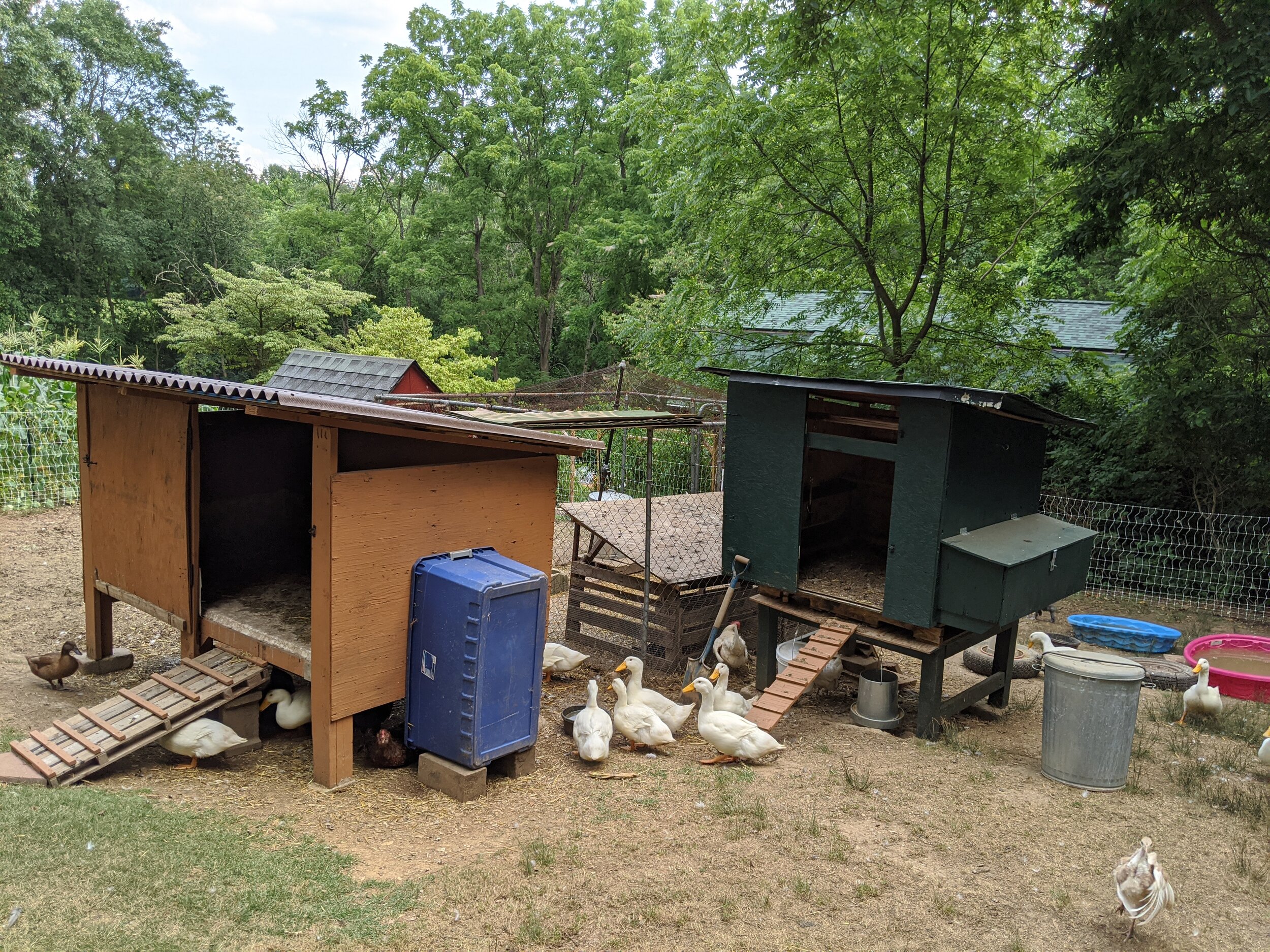Building a duckery
Adorable poop machines
Recently, we incubated some of our duck eggs, because who can resist adorable little quackers? The size of a pekin duck changes drastically, from a ball of fluff to a full grown pooping machine in weeks. Once we had all the quacking madness, we realized they needed a home separate from their parents. And isolated from the chickens. And out of the basement.
Prepwork
Enjoying a challenge and being frugal, we utilized things around our wee farm to build them a new space. We collect pallets and scrap wood from time to time and had a stash of old plywood stored from a roof renovation. Generally, we buy the hardware like hinges or latches, or reuse some other bits and pieces.
Beach Cabin Style
On this occasion, we decided to build the duck house off the ground so all the poultry friends had an extra shady spot to lounge in.
The ducks immediately let us know they approved of this idea.
Wouldn’t it be great if you could just turn your head around & rest it on your back to take a nap?
Ground Floor
The plywood is 8’ x 4’ & attached to 2 pallets that were about 4’ x 4’ each. Each corner was supported with a section of 4”x 4” timber, they were about 18” tall. These have 2”x 4” timbers in between for added stability. This thing ain’t going nowhere.
Everything was level with the help of random cinder blocks, cement bricks, and dirt and stones and stuff. Nothing is level on this property. It is good exercise to wander, only good thing I can say.
Additional Security
The chicken yard (which also encompasses ducks and turkeys now) has a Premier One poultry net electric fence surrounding it. So, each side is about 50’ long to contain the critters away from our garden in the summer time, but also protect them from foxes and raccoons and dogs and whatever else might choose to visit.
We even had a bear appear a couple years ago, but it passed by the chicken house and just attacked our bird seed feeder, which incidentally is only a few feet from our actual human house. Fun story, no injuries, but the bird feeder has since moved further away from our back door.
Protect your hard work
We have a 5 gallon bucket of wood stain in a cedar tone that most projects get a nice slather with. It was one of those “accidental paints” at Lowe’s that we acquired at a deep discount, which is kinda the best way to make paint color choices. Good stuff, on sale, get it. So, we kinda have a Texas Longhorn feel about the place.
Framing
Next up are walls, which are 4 foot sections on back and sides, connected with 2” x 4” timbers used to frame the house.
We had a couple 2” x 6” timbers that we used for the front part of the frame, about 6’ tall, so that the front has a higher slope down to the back.
We use our Ryobi tools a lot, this set included a drill and saw and has been going strong since 2007 and has had many new Ryobi tools and batteries added over the years.
Fancy Linoleum
The easiest way to clean out these duck and chicken houses is to have a layer of linoleum or vinyl that is secured to the walls. It is easy to sweep out or scoop out the bedding and waste or even to hose it out if necessary. We just secure the sides with a staple gun and so far, have been happy with the results. It is great if you can find clearance pieces at the resale shops or habitat for humanity kind of places.
Since we purchased this during the Covid-19 pandemic, I just ordered this through Lowe’s, “Royelle 12-ft W x Cut-to-Length Rock Hill Stone Look High-Gloss Finish”. It is a pretty cheap (was the cheapest option) and crappy product but it does the job, all that matters now.
Roof
Rather than just sticking an old piece of plywood on top, we decided to protect our hard work. We got a couple pieces of “Ondura 4-ft x 6.58-ft Corrugated Asphalt Roof Panel” with the corresponding nails from Lowe’s. We chose brown to go with the ‘wood theme’ I guess we were creating on this build.
Ventilation
Because this is for the ducks, we leave gaps at the top for ventilation. Ducks produce a lot of wet poop and the ammonia levels would be too great if you close them in. Extra straw in the winter keeps them cozy and warm & they all huddle together, so we don’t worry about cold nights.
Differences in Ducks & Chickens
It is not recommended to have water or feed bowls in with ducks as they will only make a huge mess overnight with them. These ducklings were only a few weeks old, and it was early spring, so we provided a heat lamp at night and gave them a waterer to keep them happy and safe til morning.
Ducks don’t require a nest box like chickens, so there’s no point in building them a special thing. They just lay an egg where it pleases them. Don’t waste your time trying to train a duck. Sometimes they lay it at night, sometimes they drop it as they wander through the yard, sometimes it is muddy, sometimes it is clean. Sometimes you don’t find it at all.
End Result
Now we have a walk way for the ducks to go to bed in the evening. Each door is just a 4’ plywood panel with a 7.36-in Steel-Painted Gate Latch on each door, along with some nice heavy hinges.
We keep straw in a big plastic tote to refill the duck bed, along with a shovel and a curtain where all the bedding gets tossed onto & then put in compost or the garden or whatever.
What do you think, would you have done anything differently?
*In our posts, some links are affiliate links whereby we earn a small percentage of the purchase price, at no cost to you. Most other links are simply the products that we purchased for your information, no affiliation exists. Thank YOU for your support!
